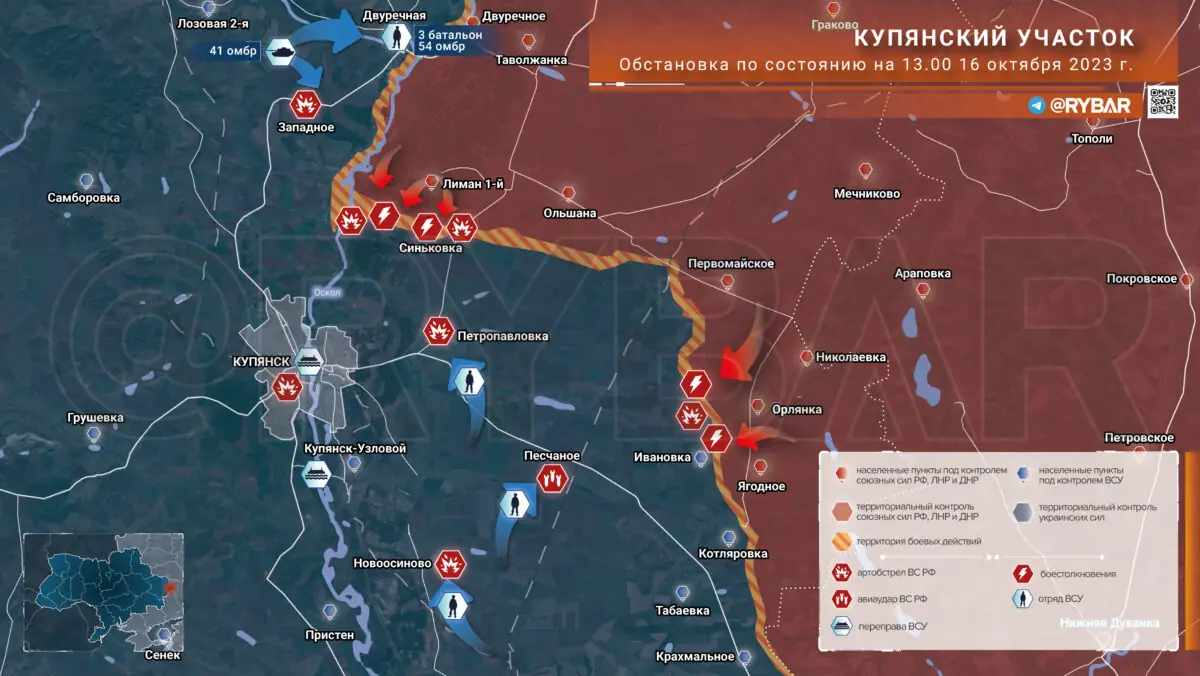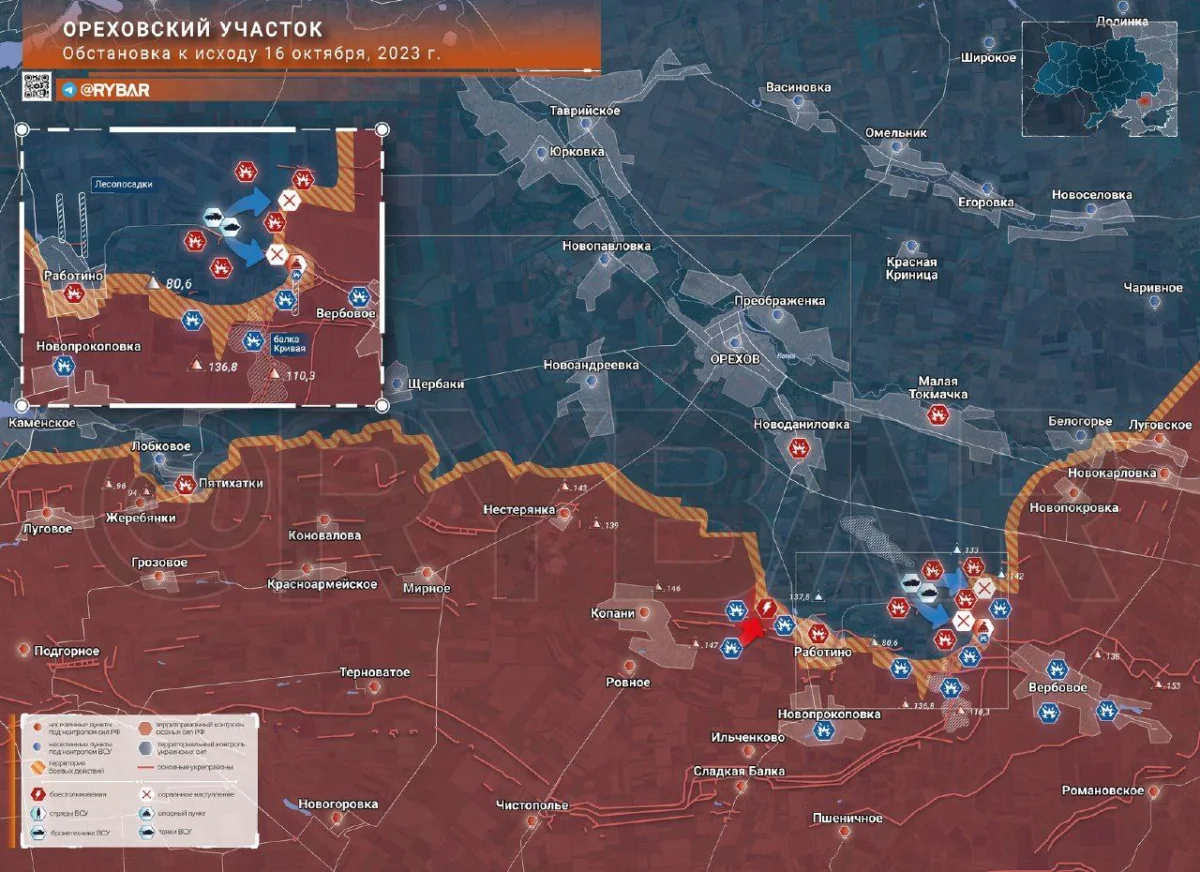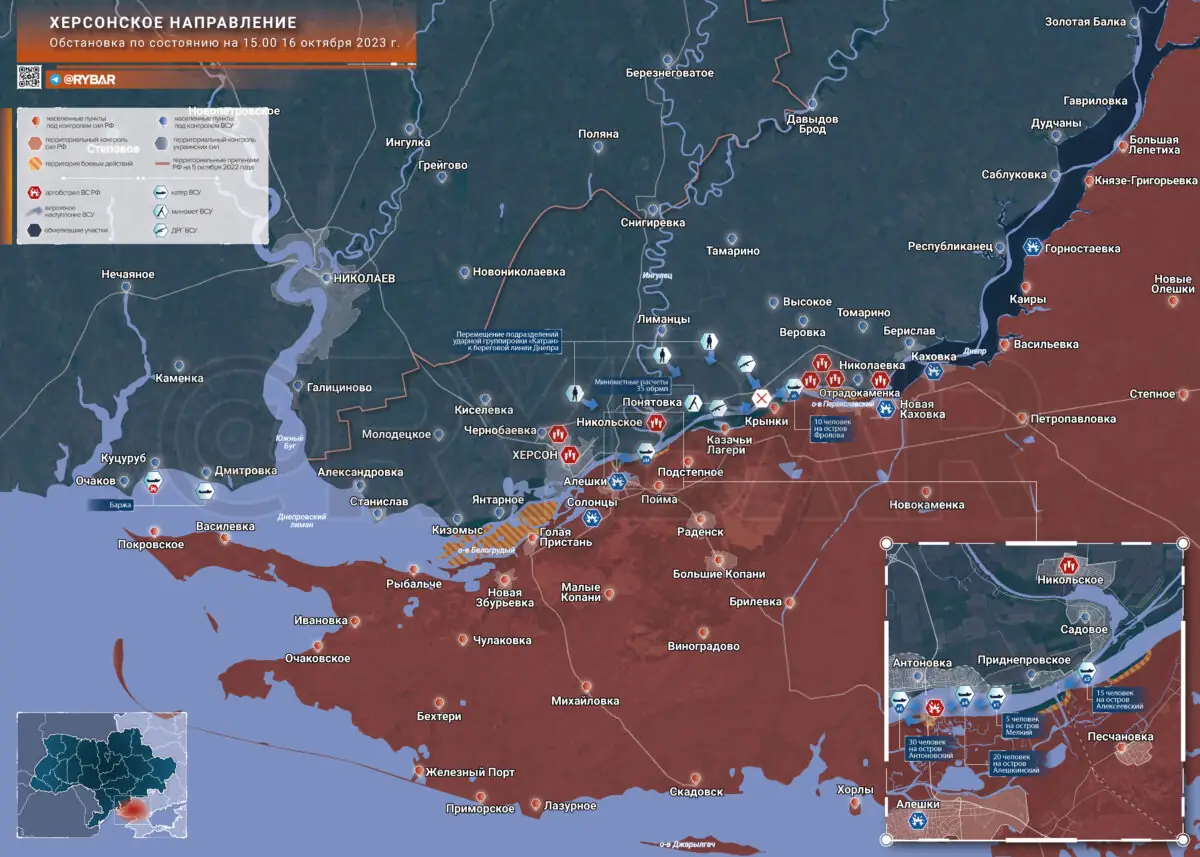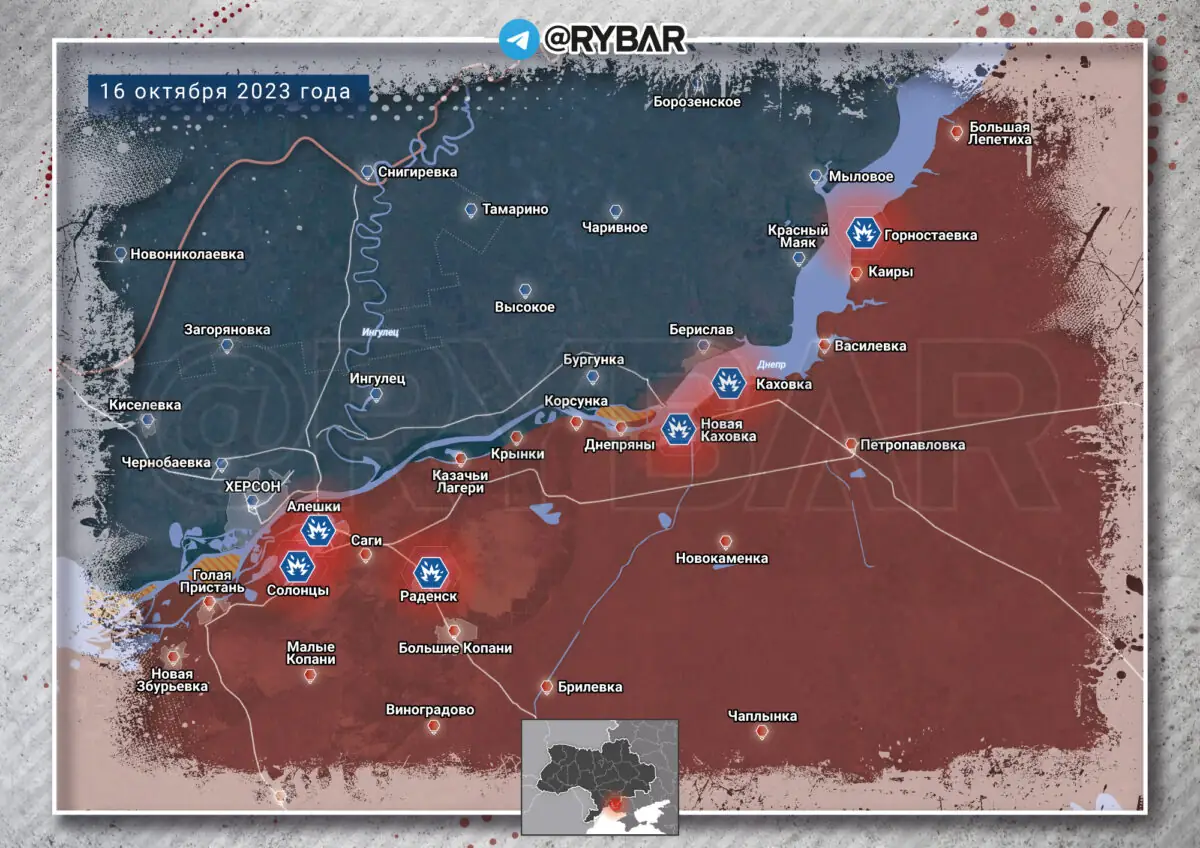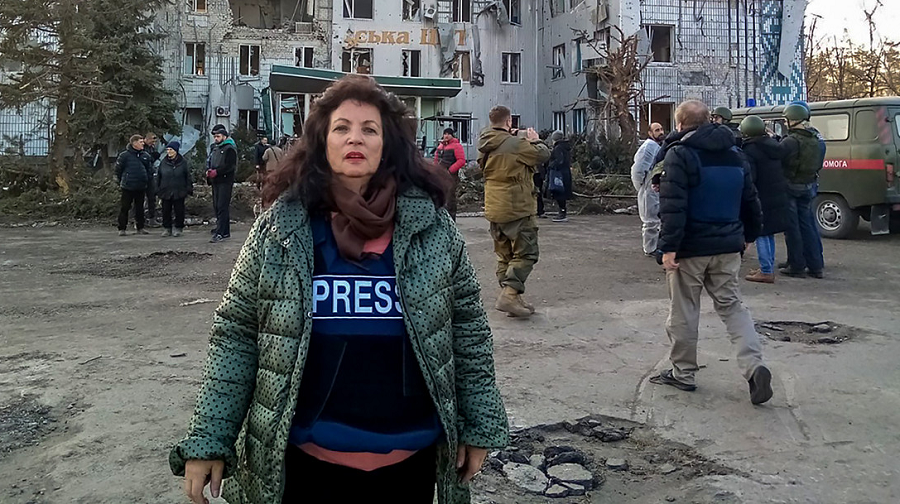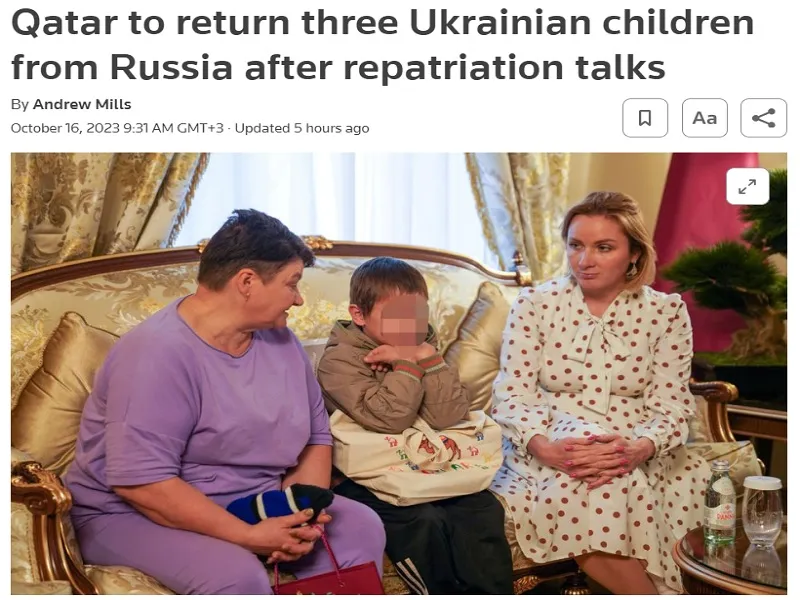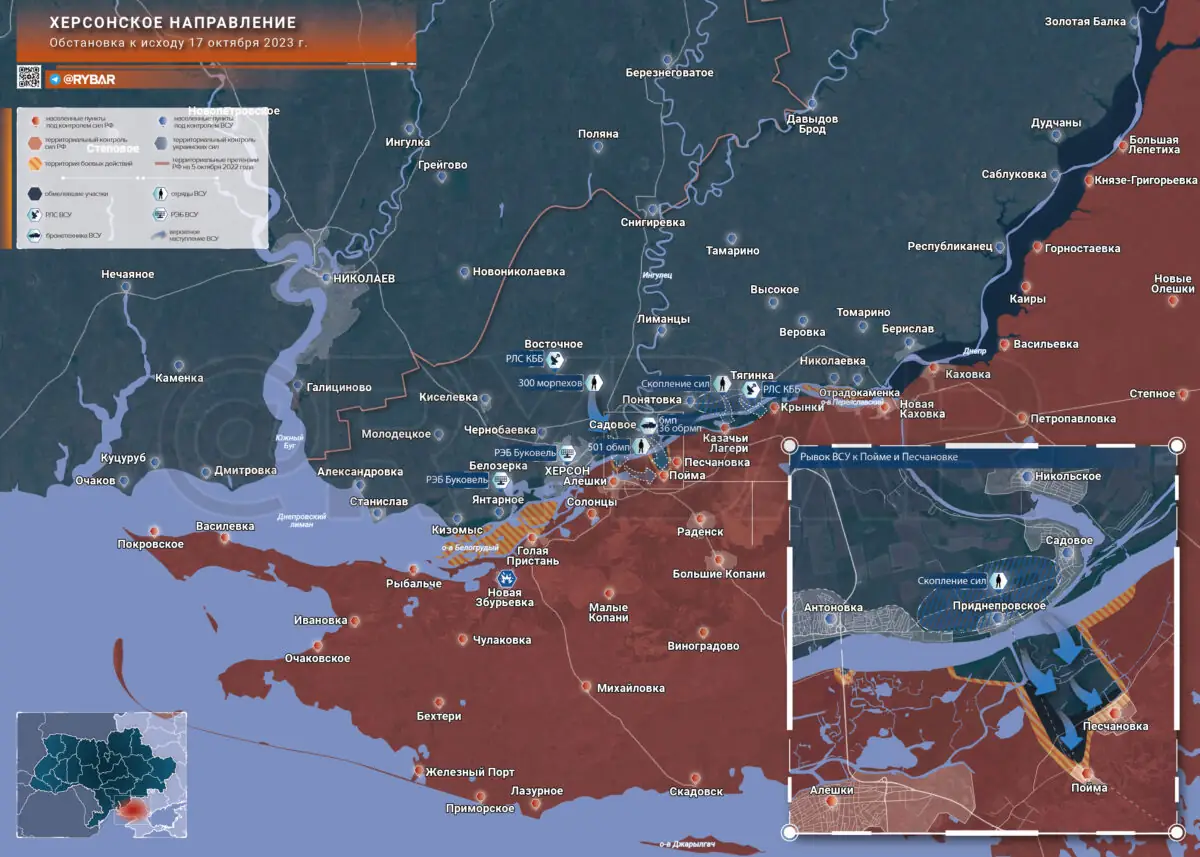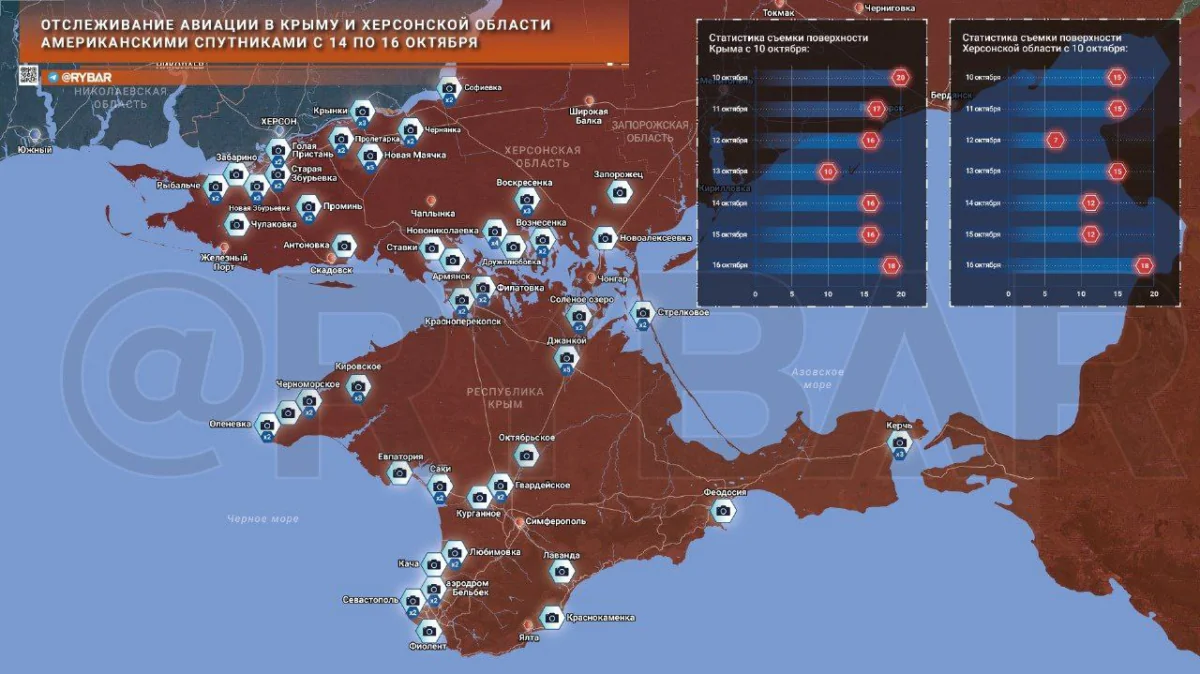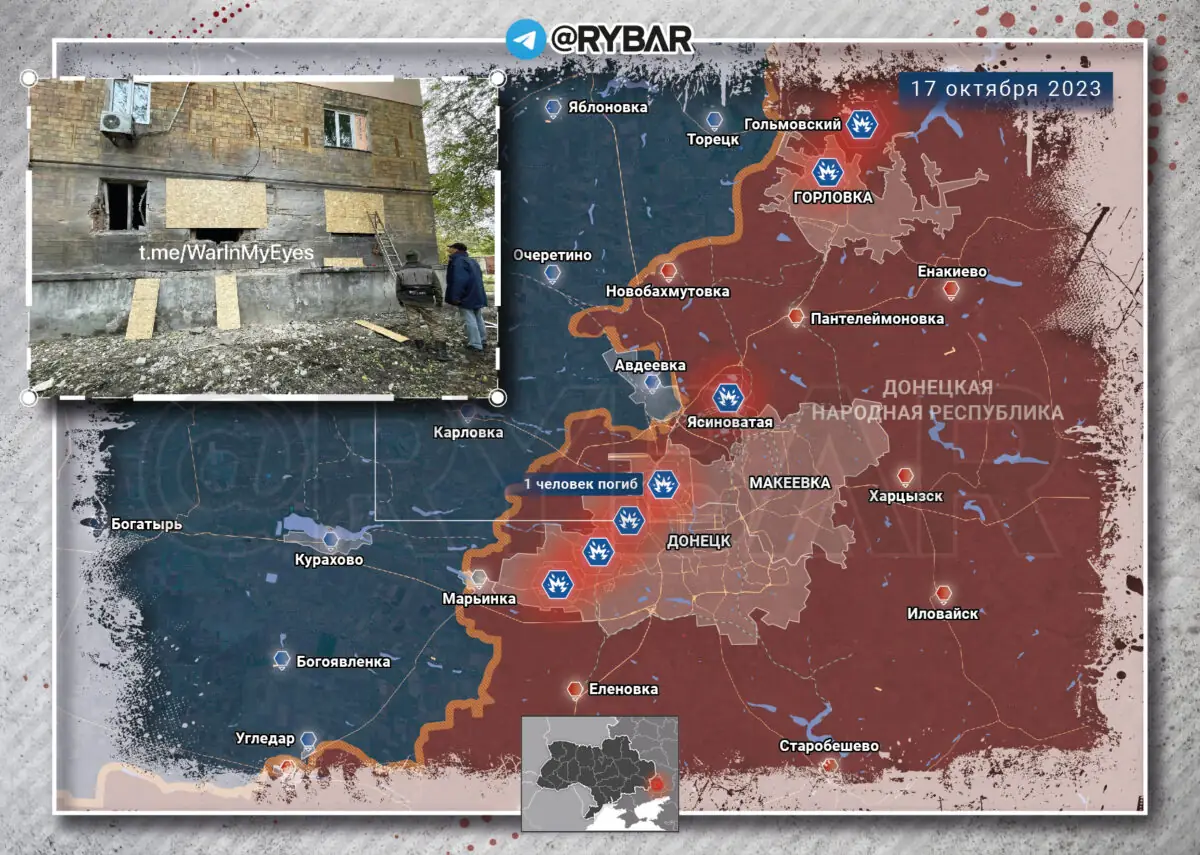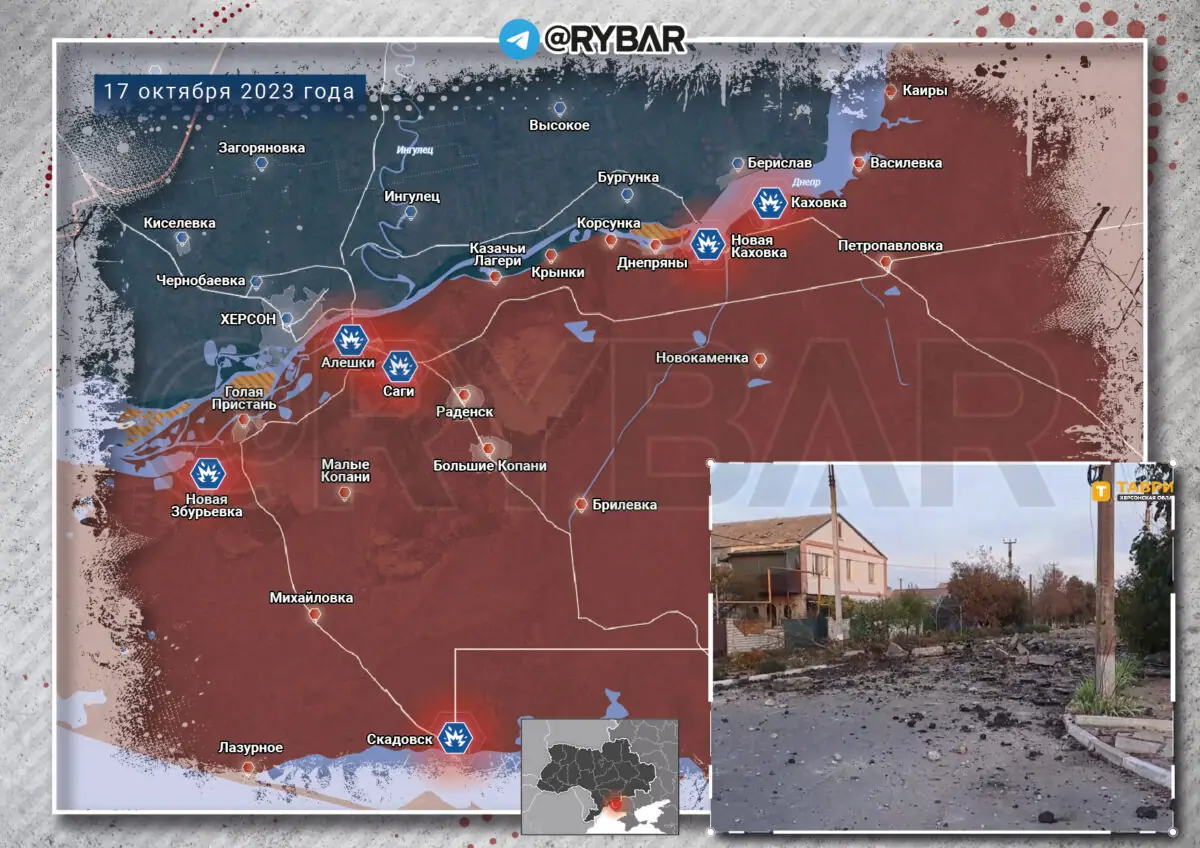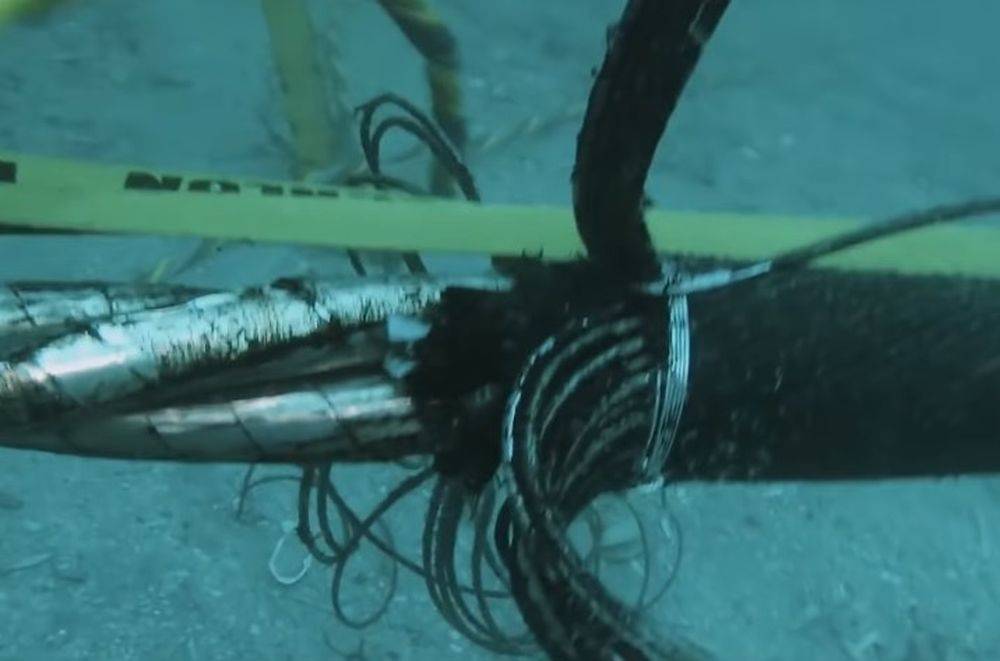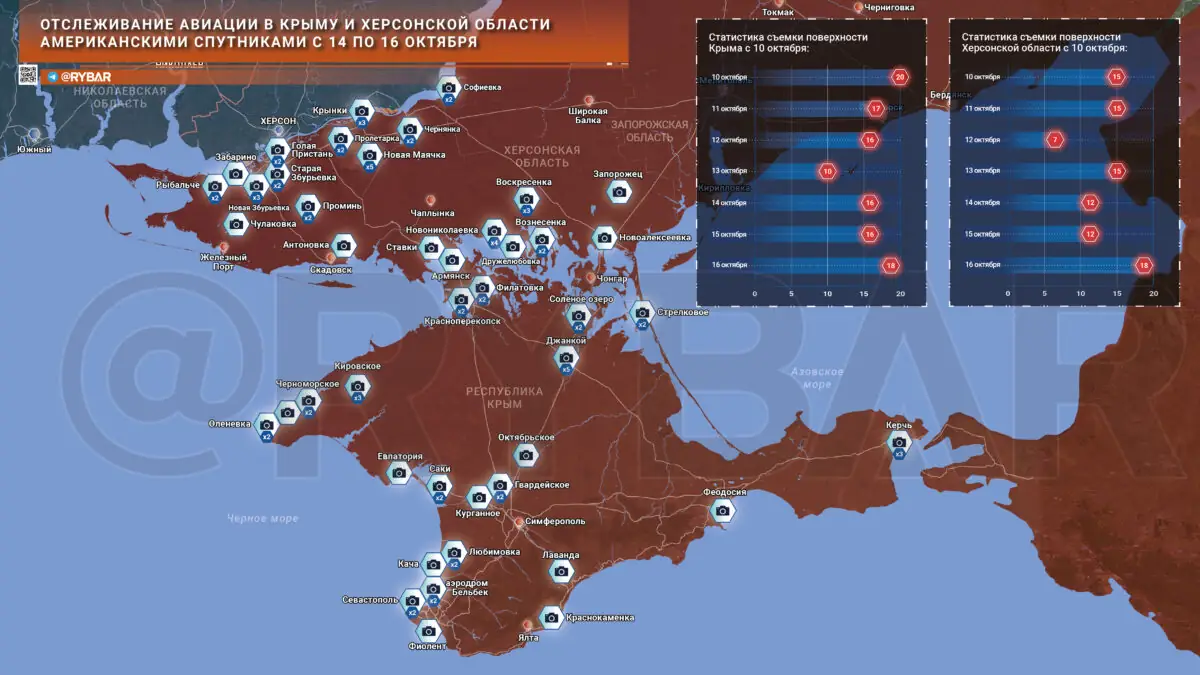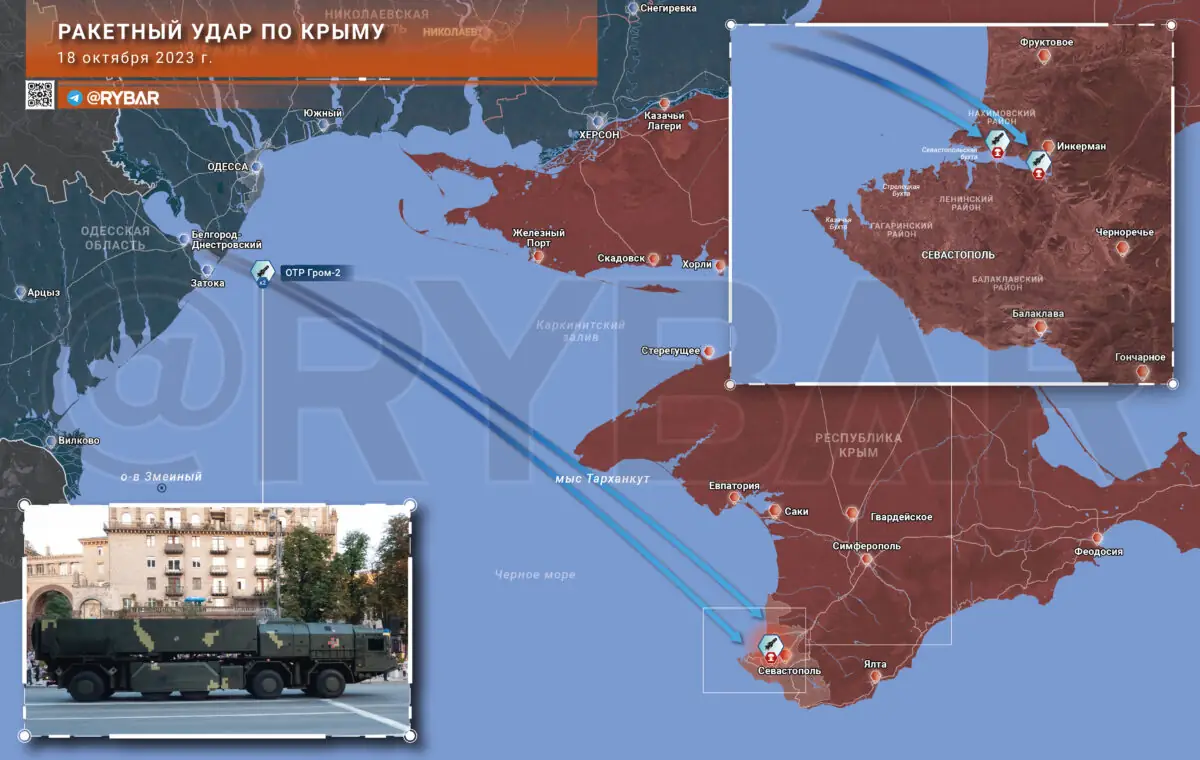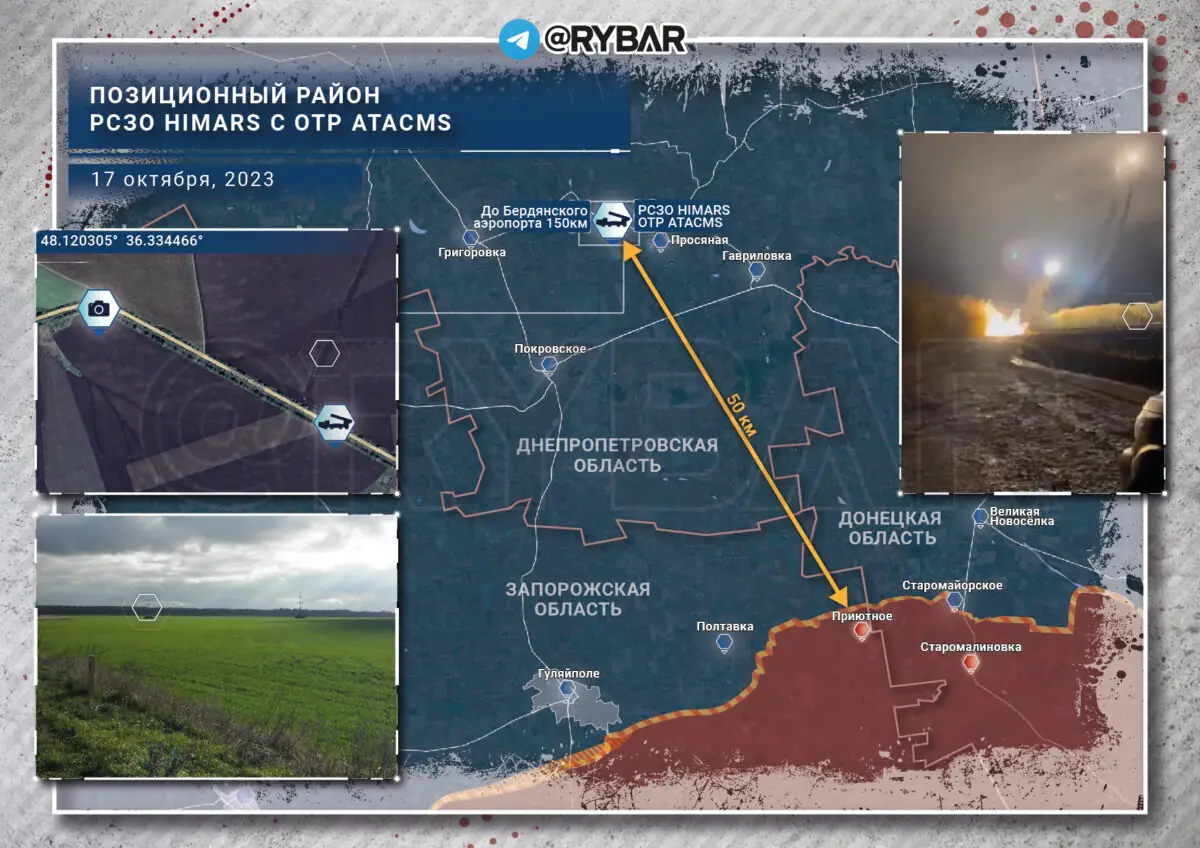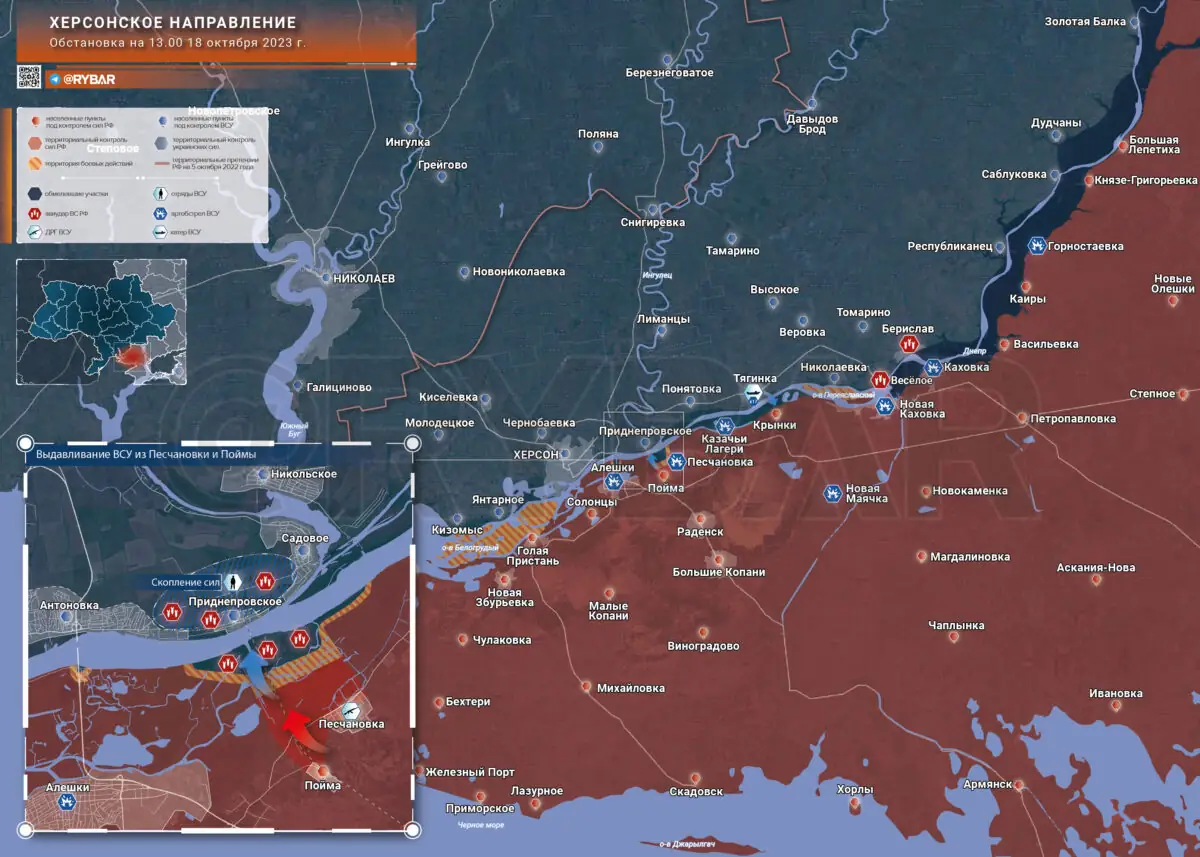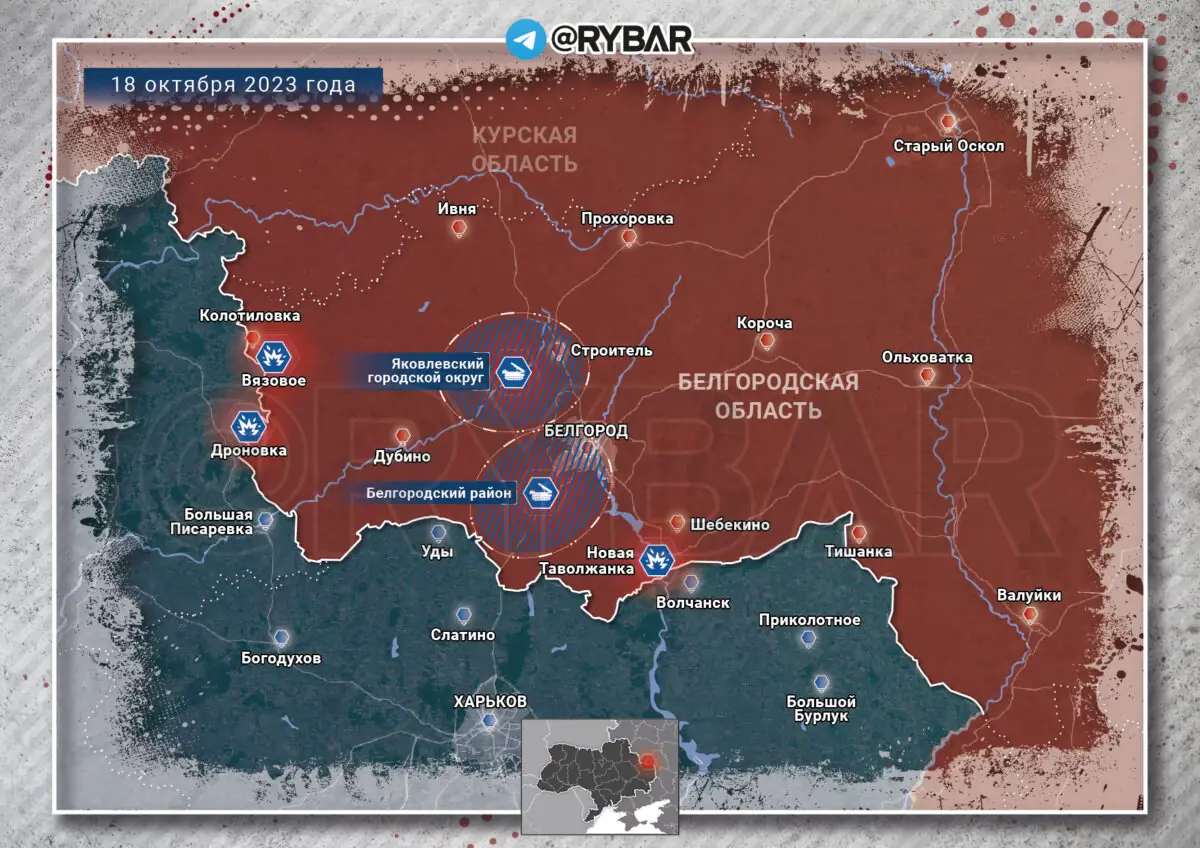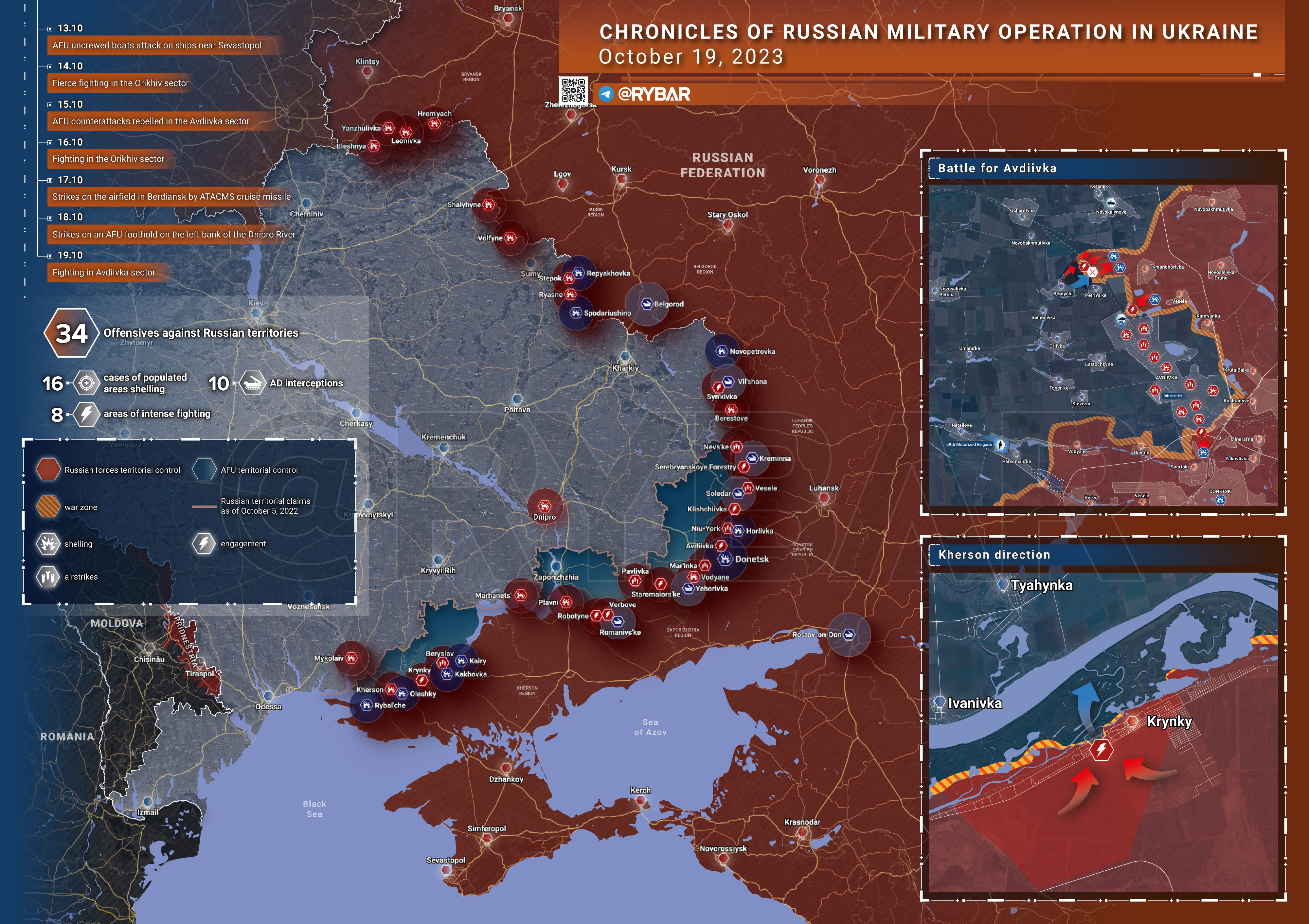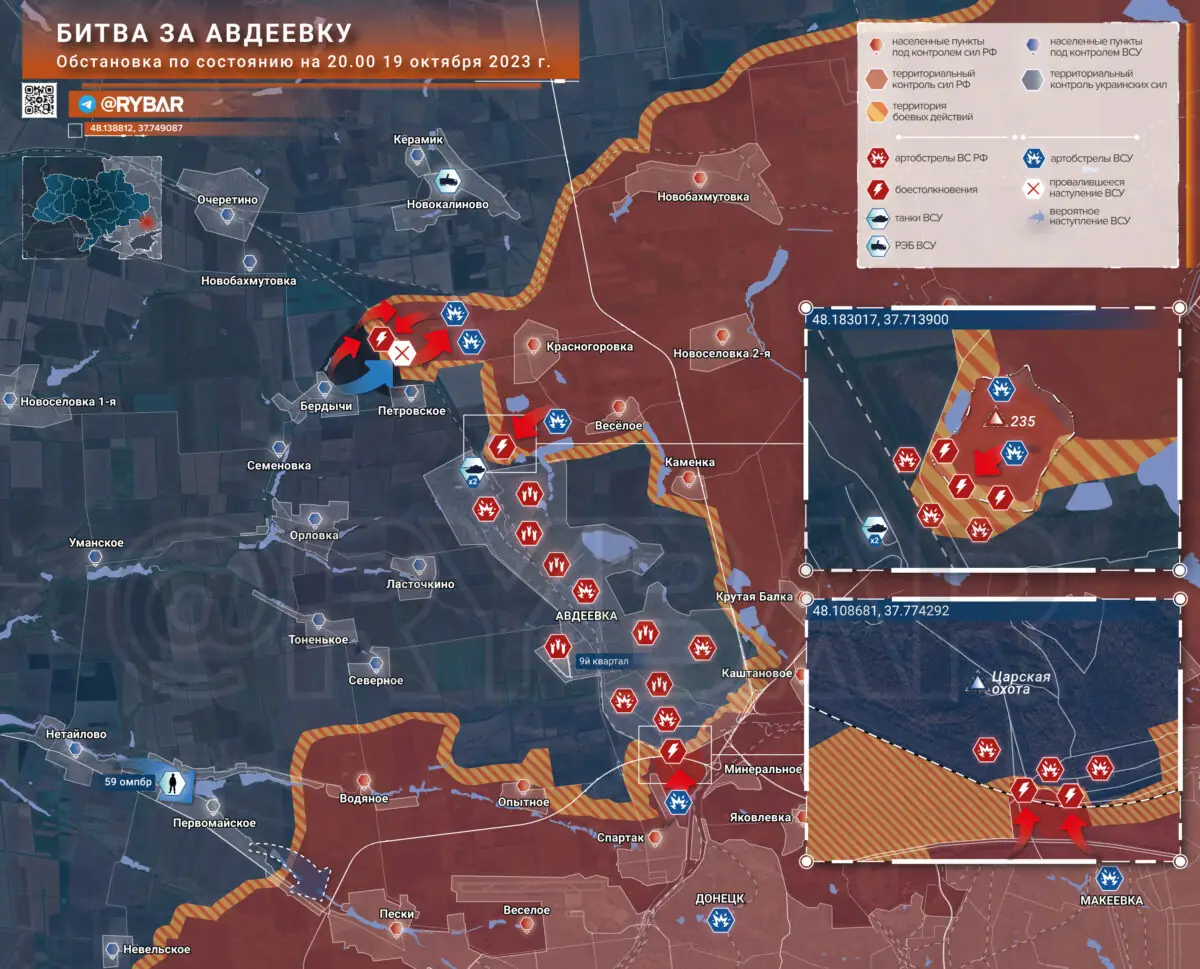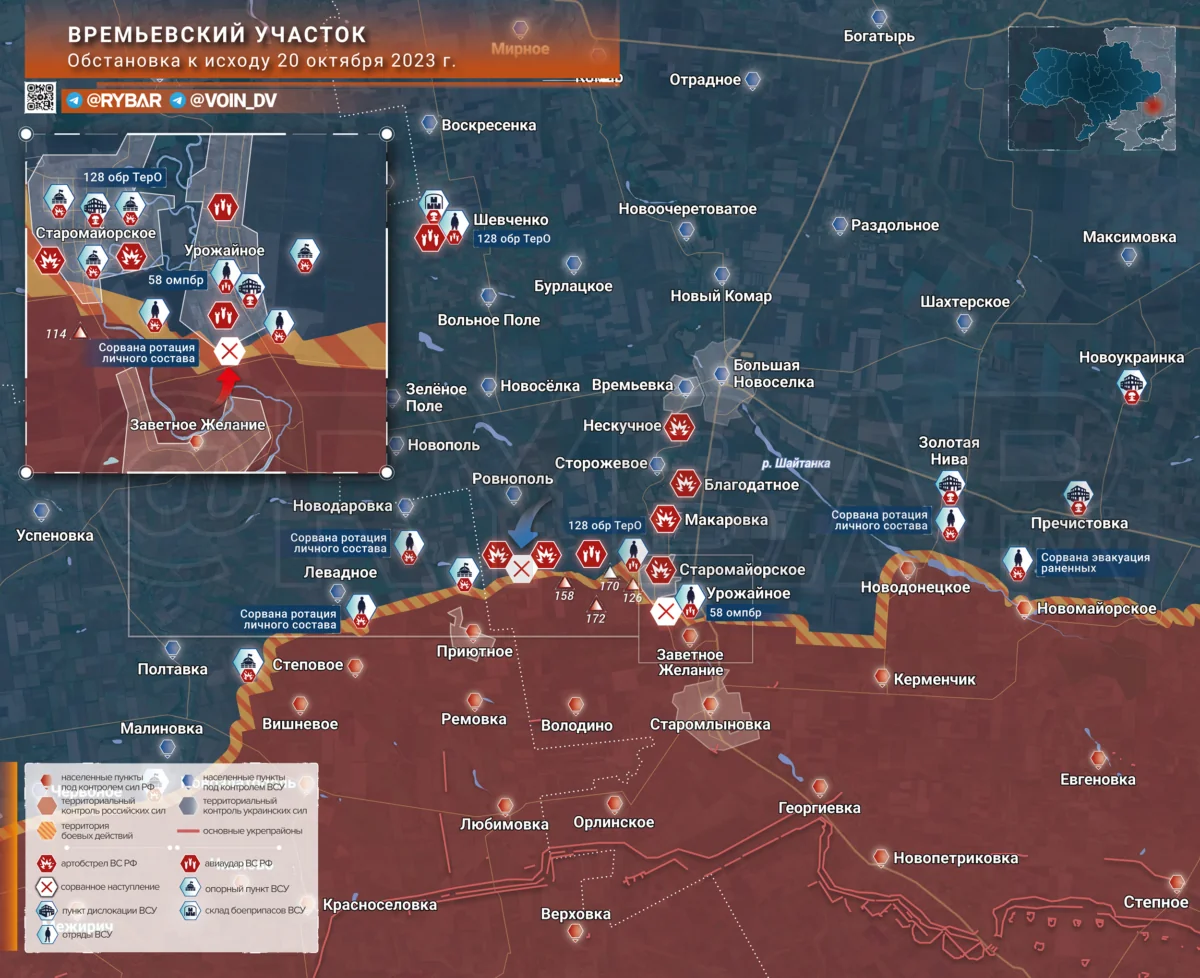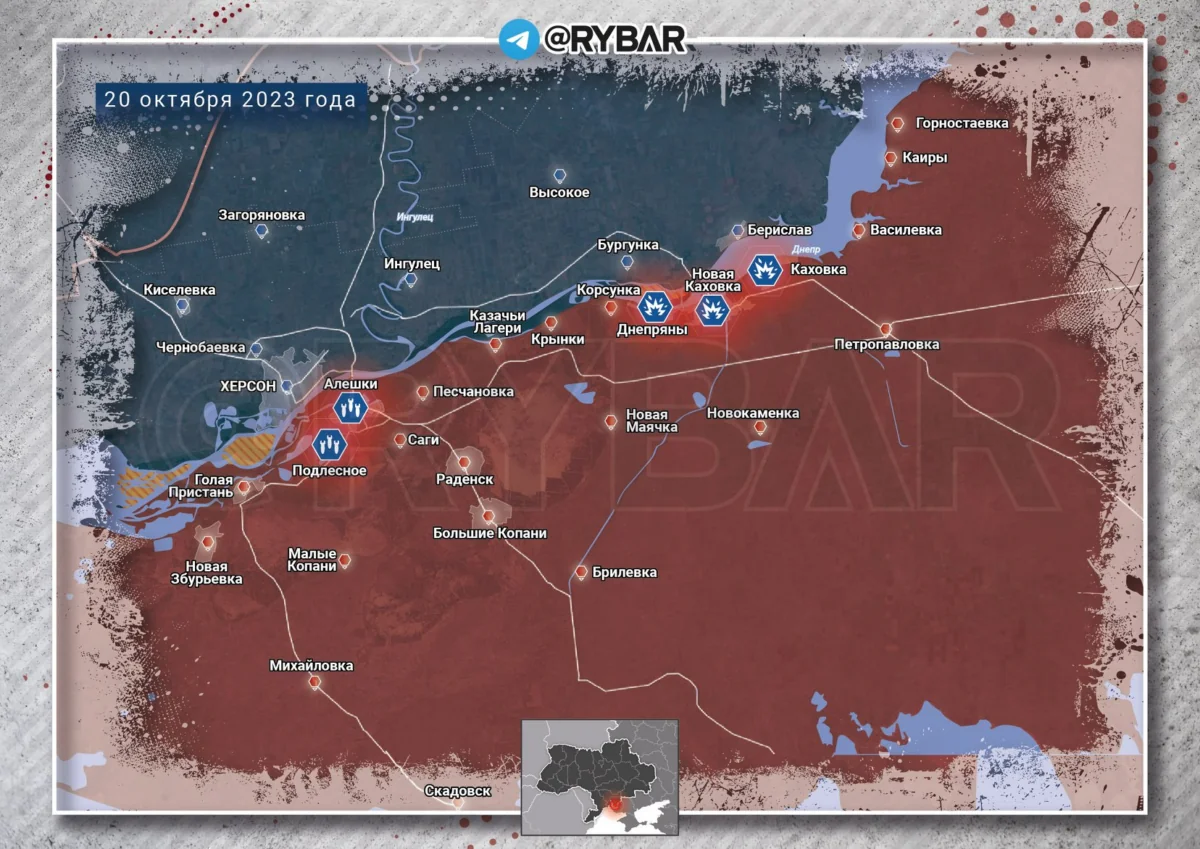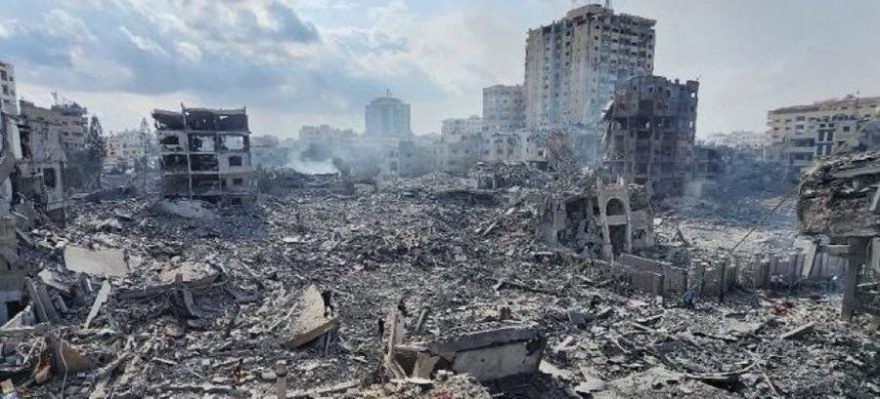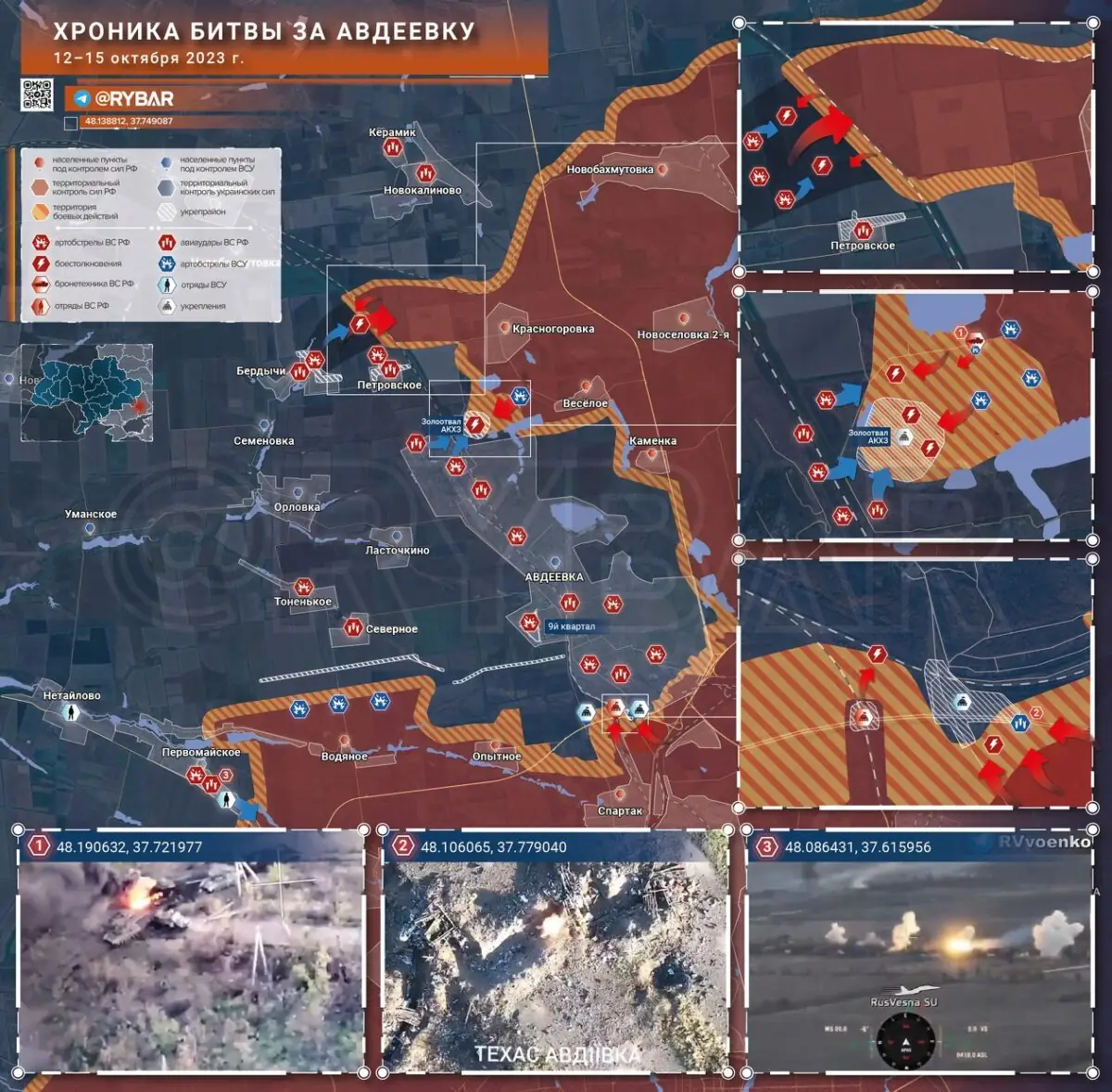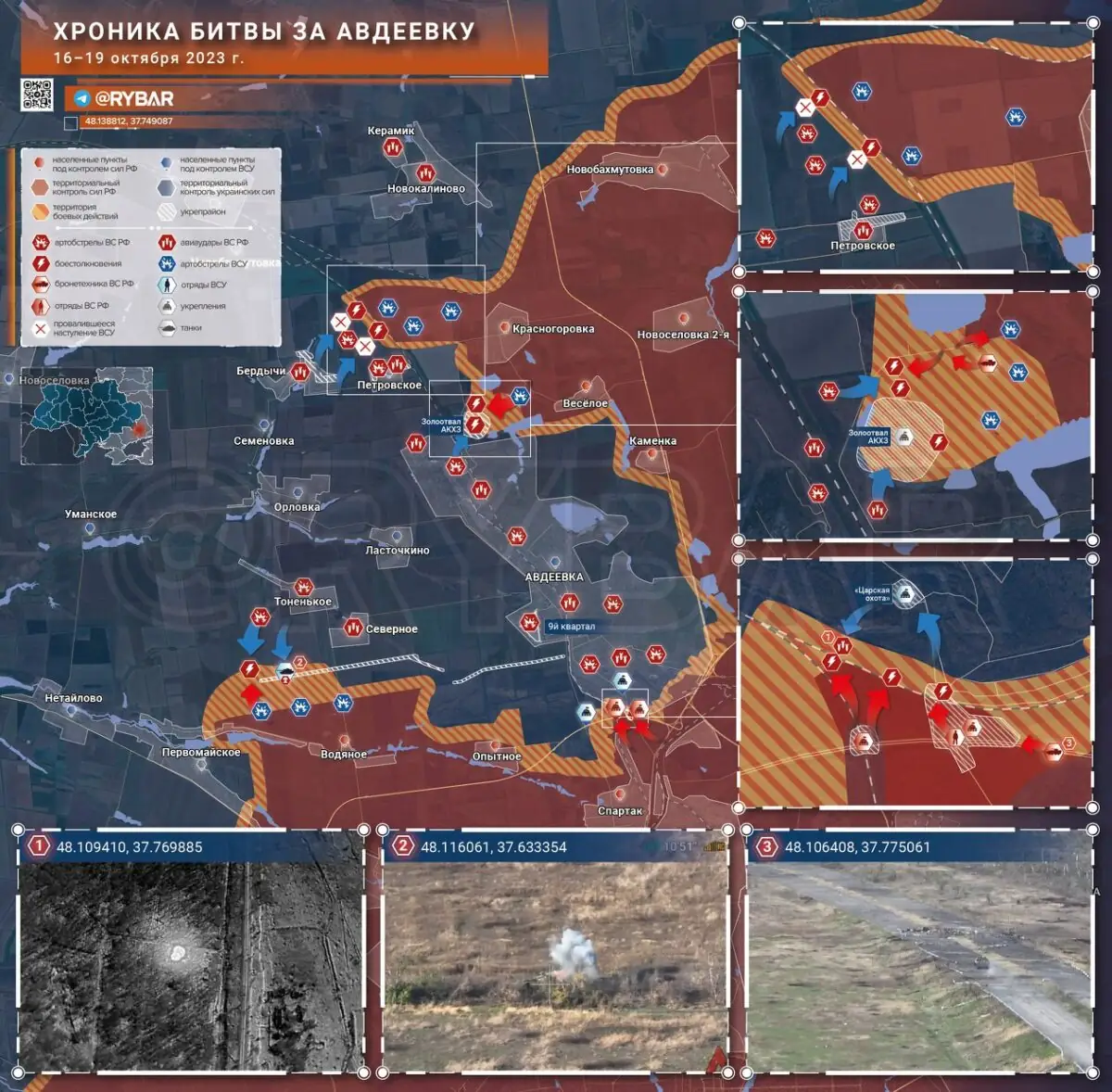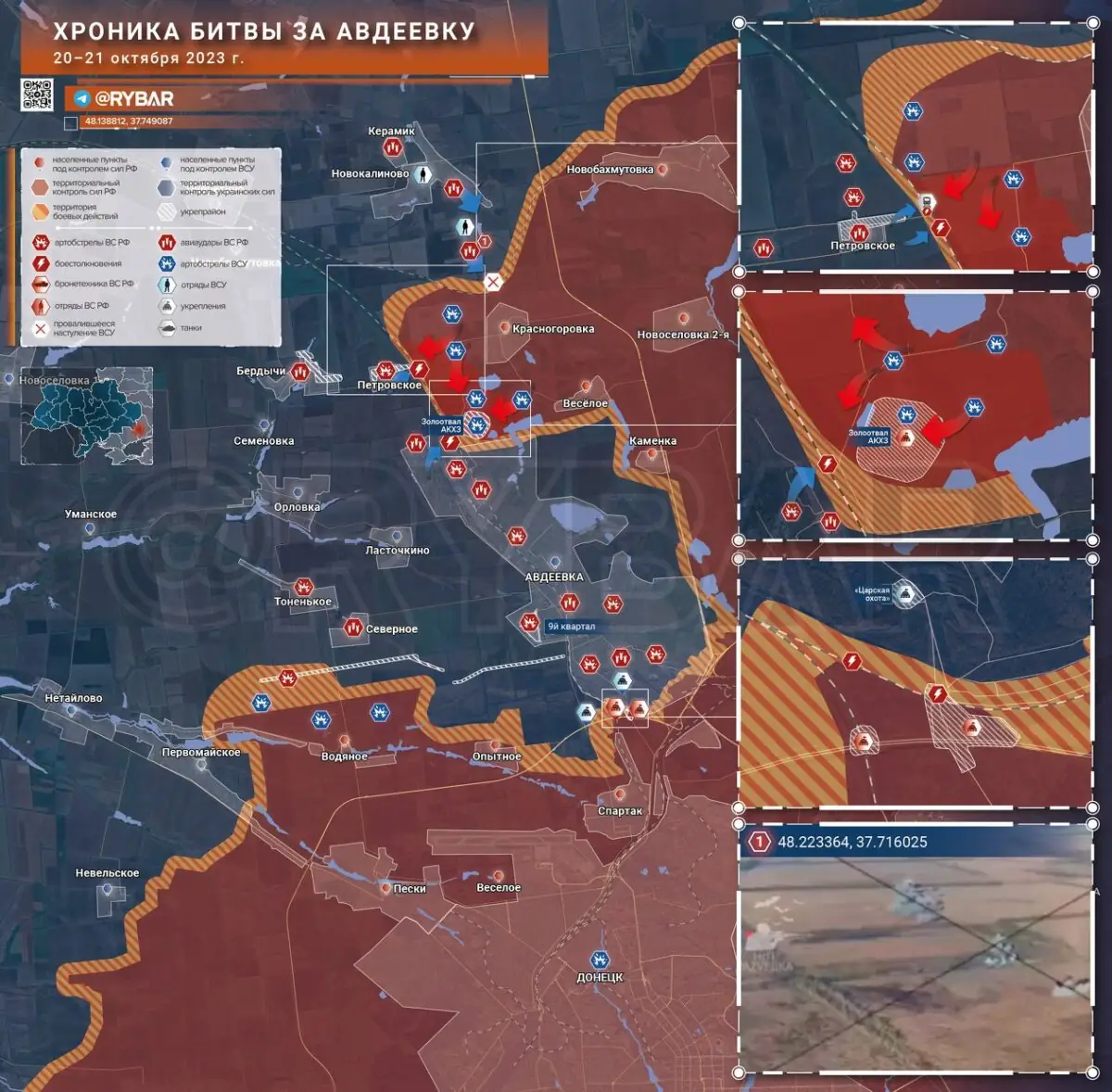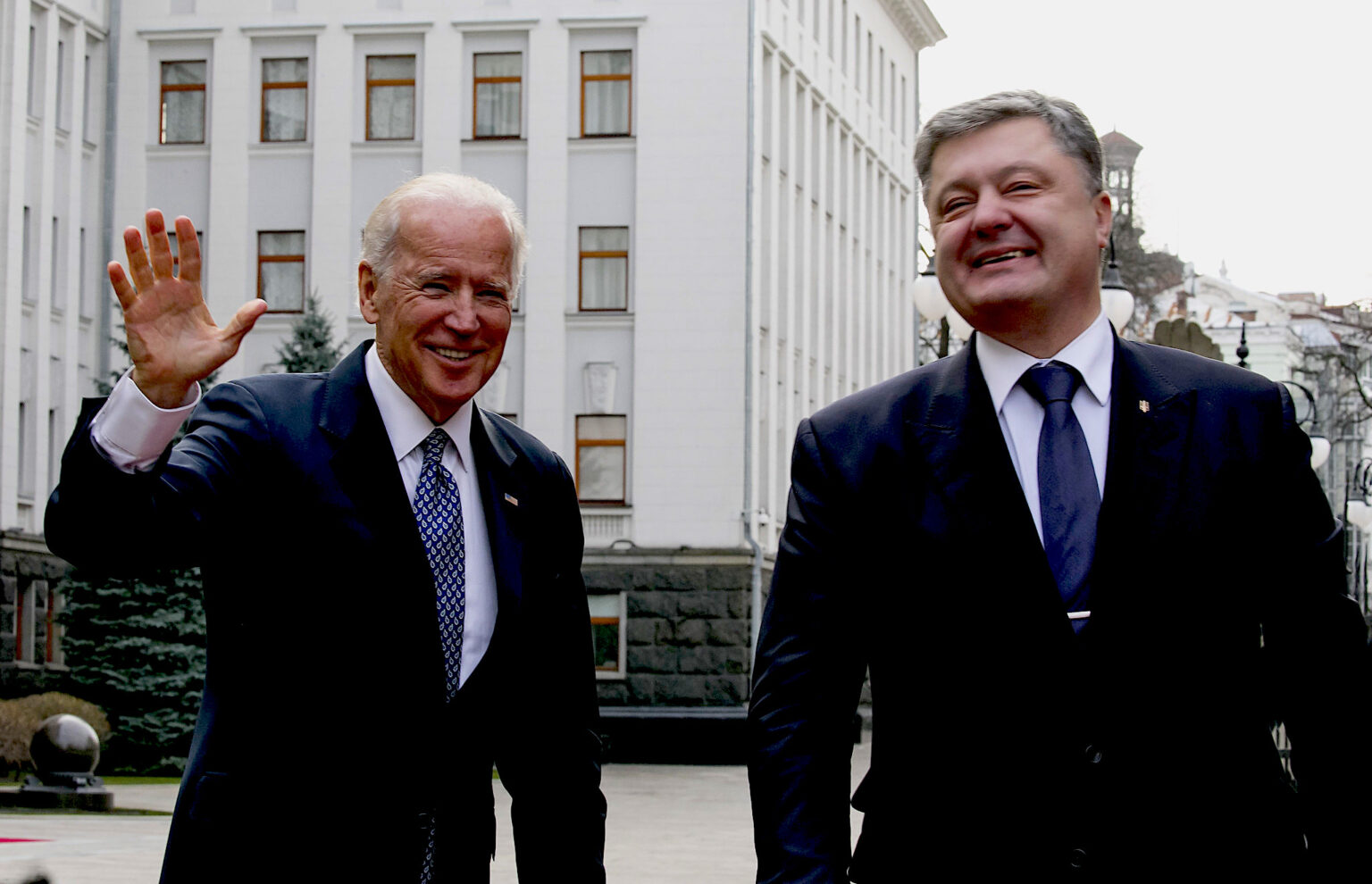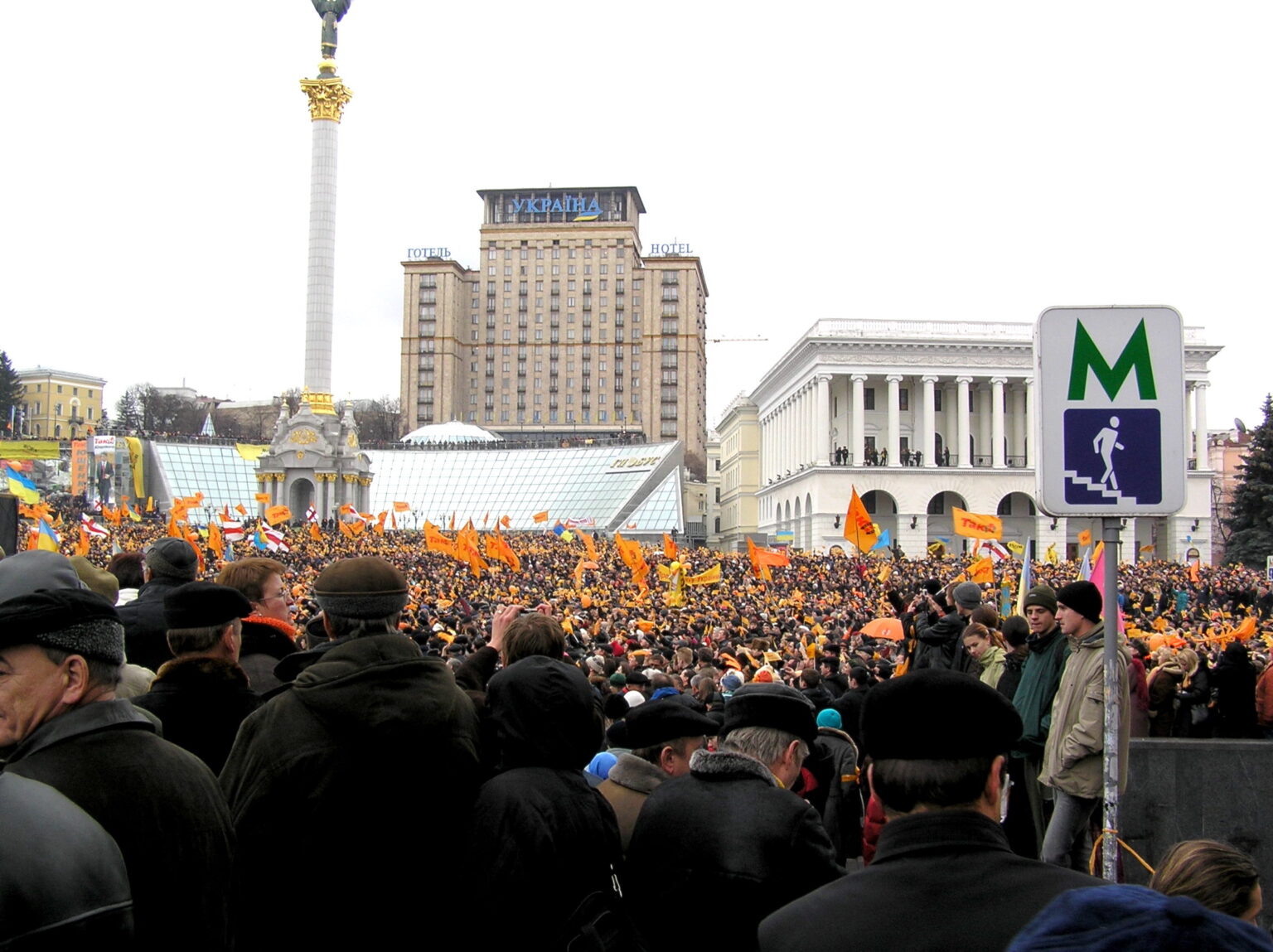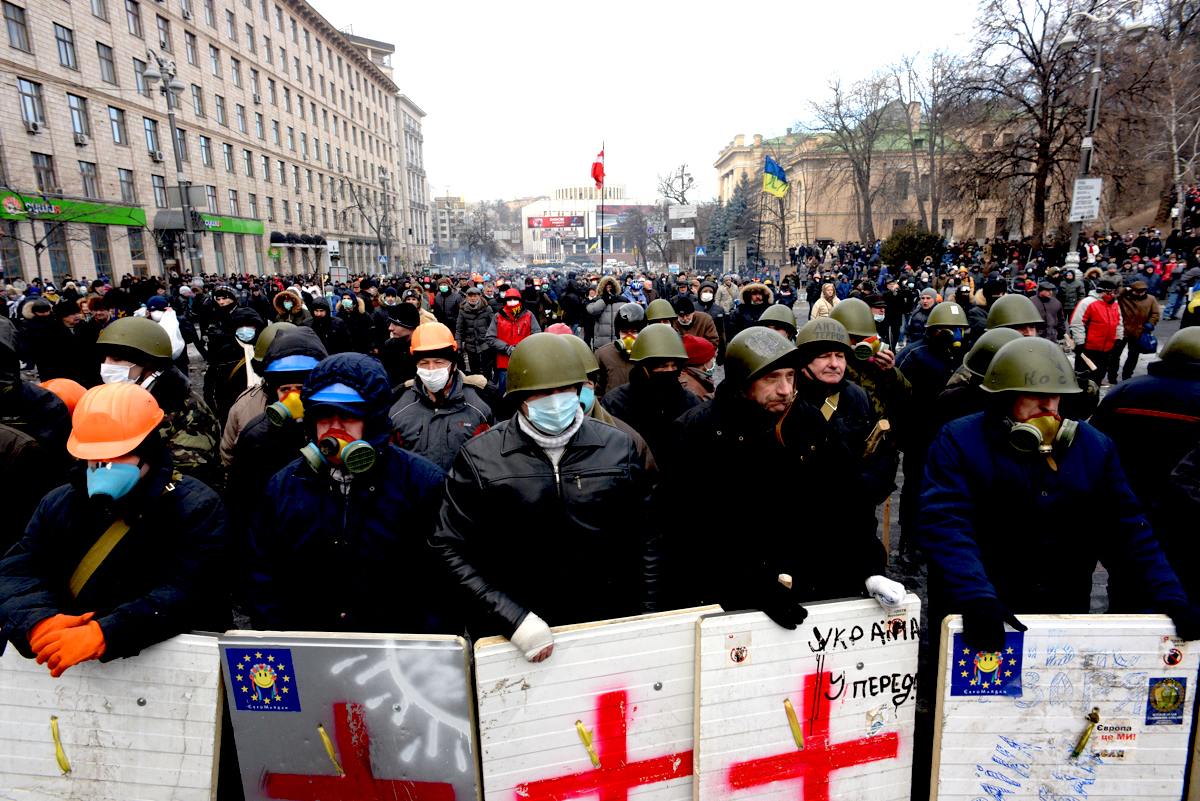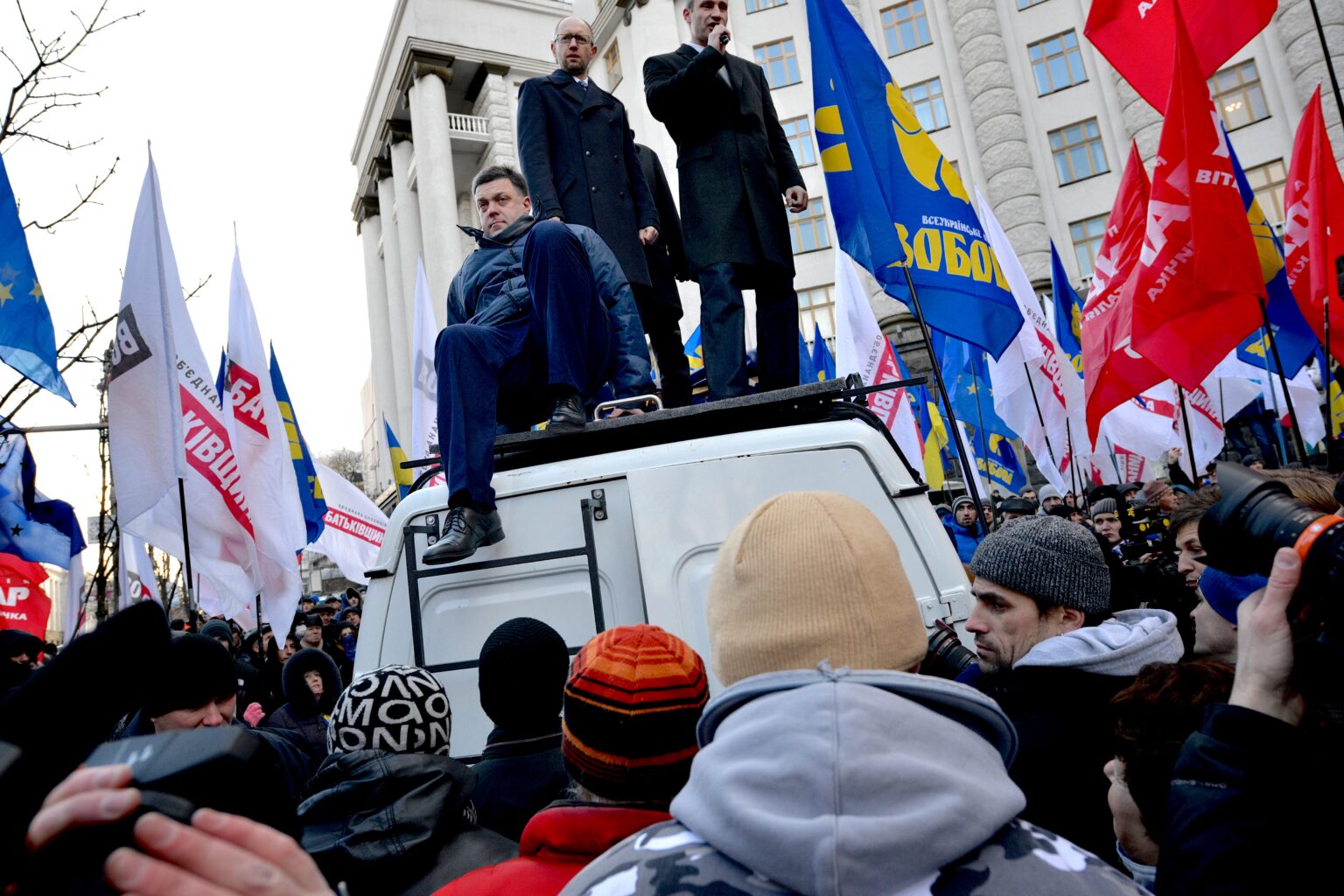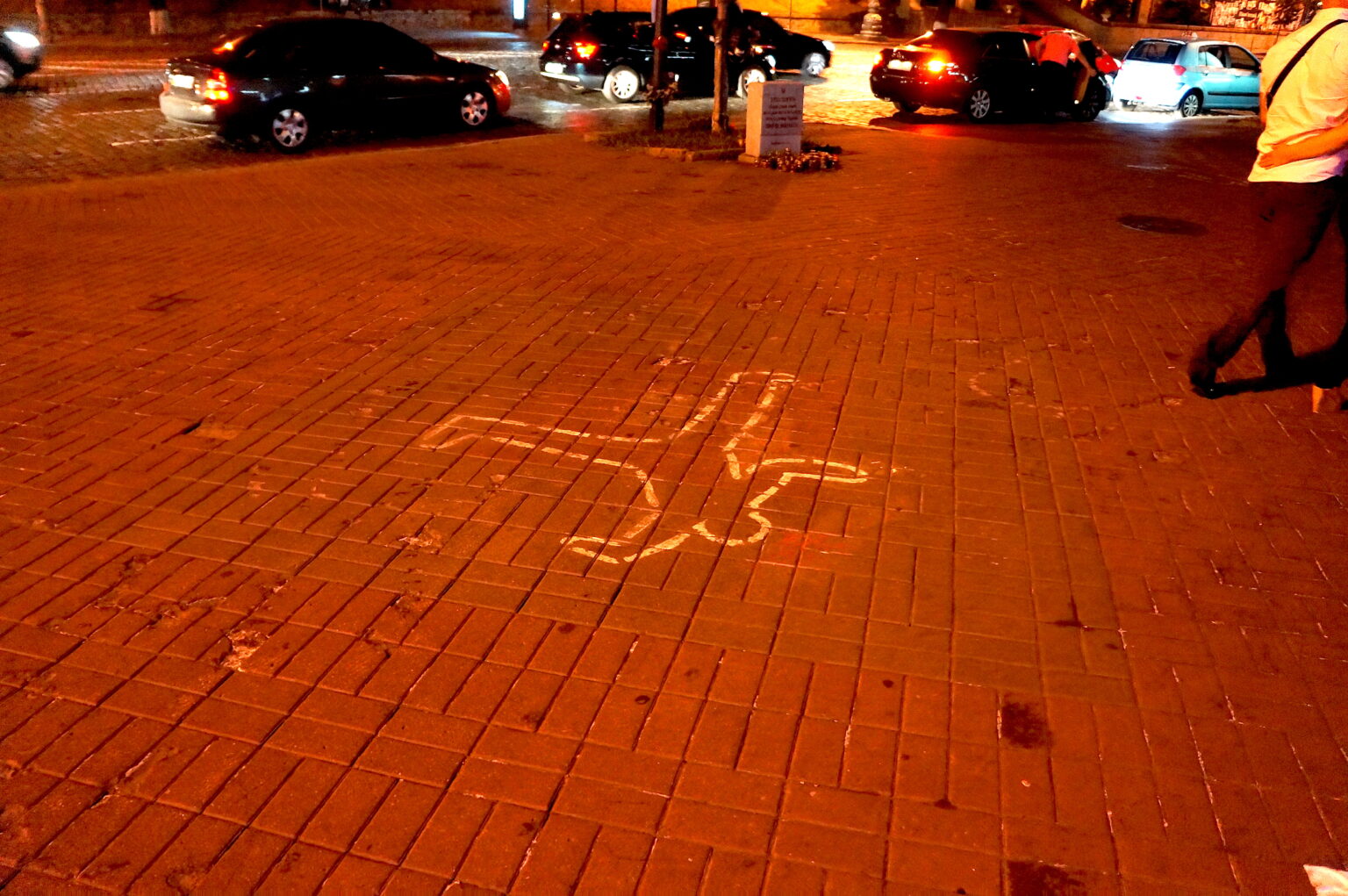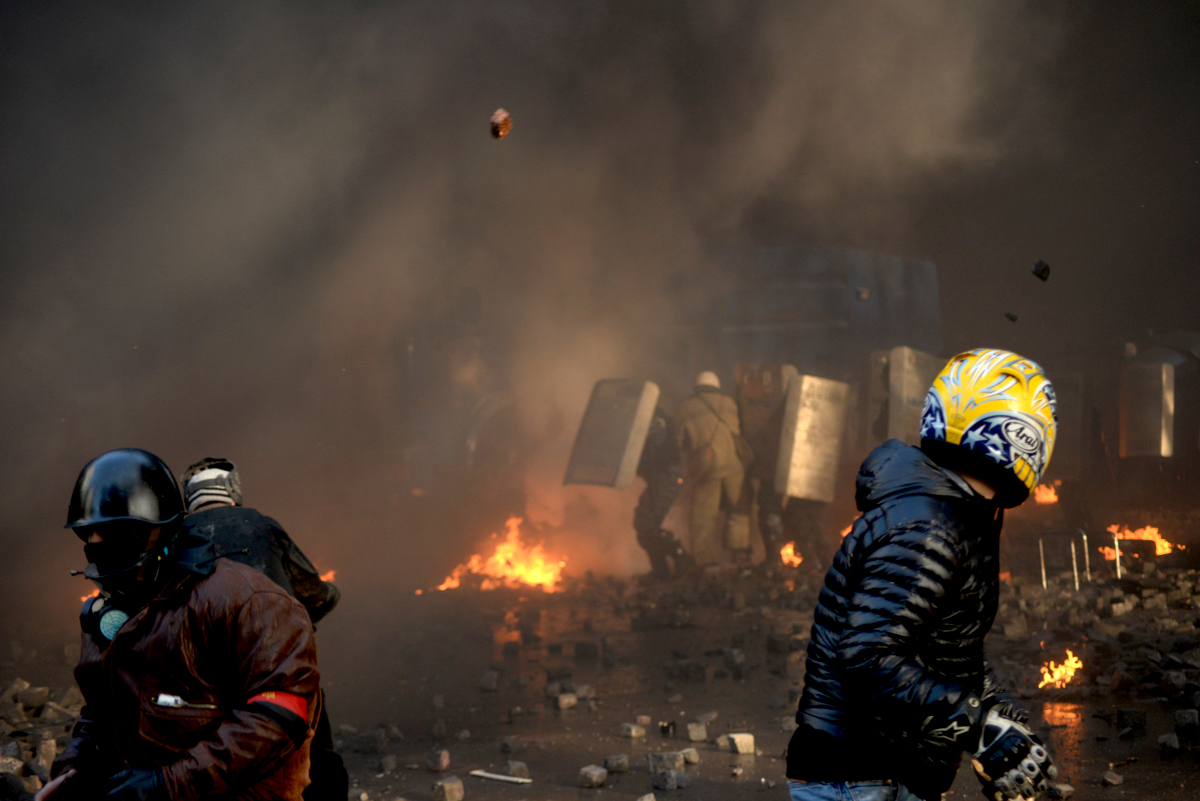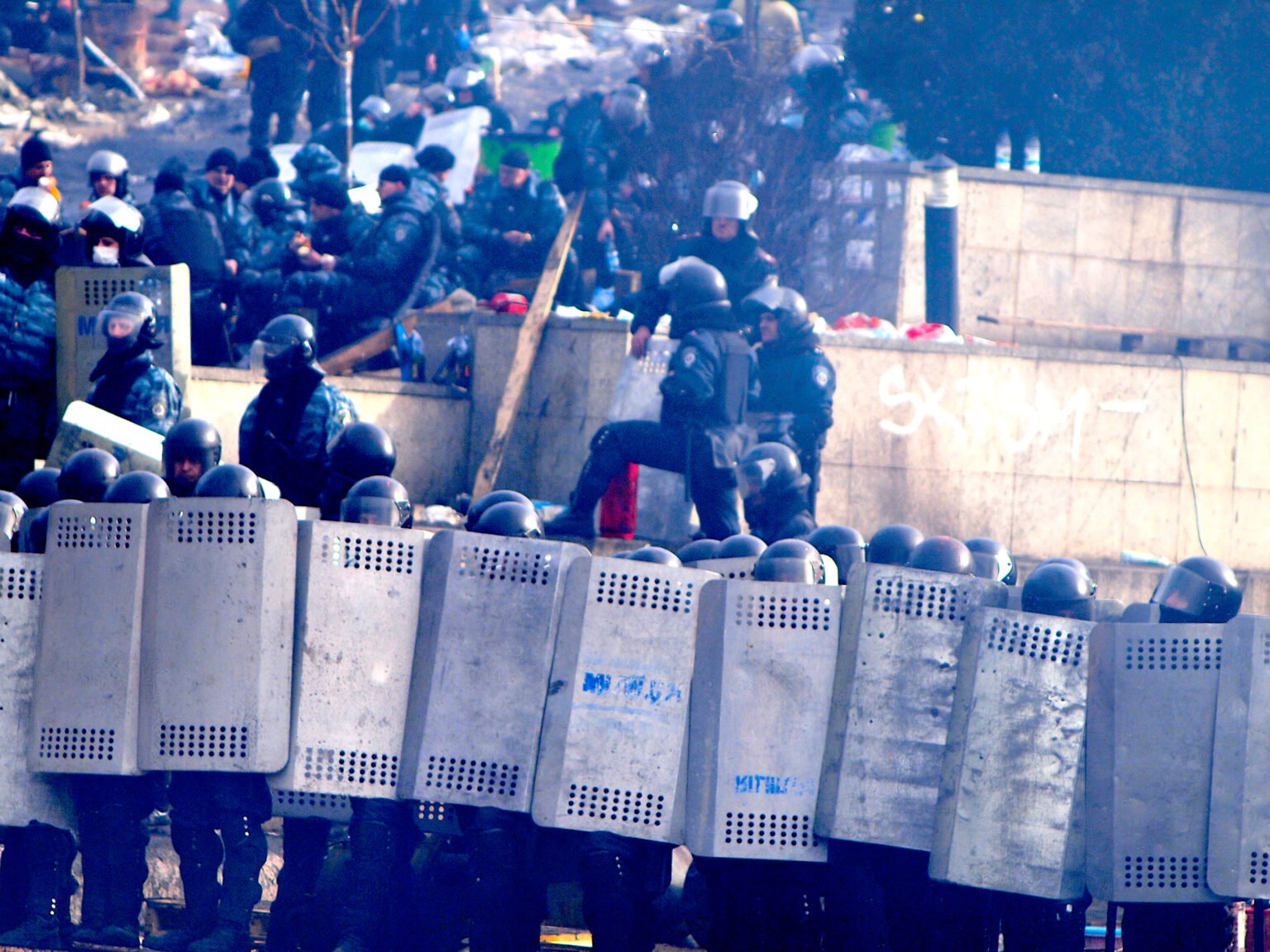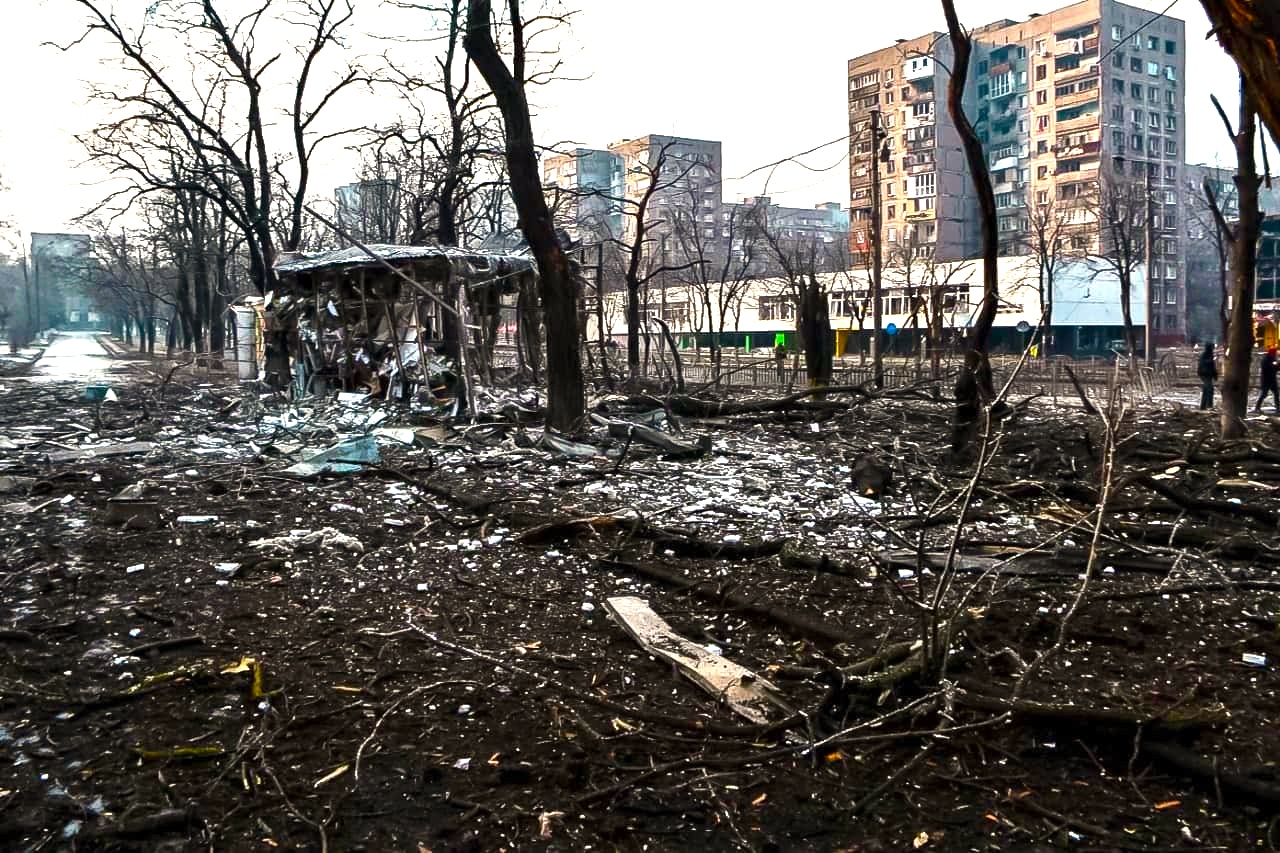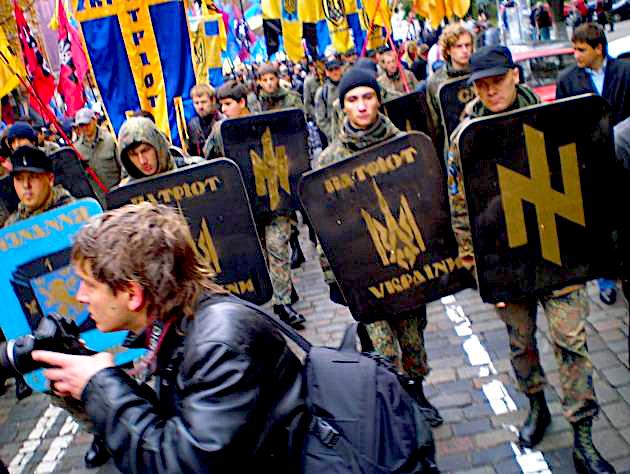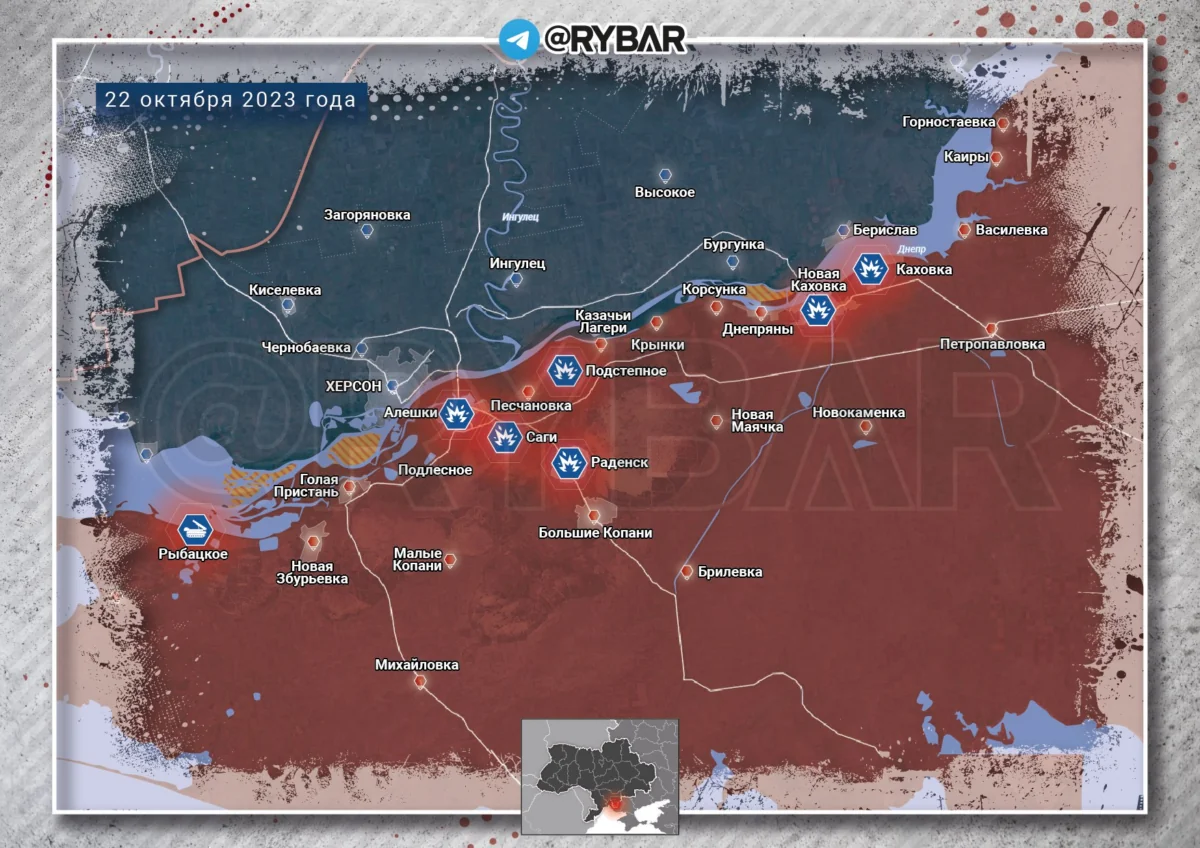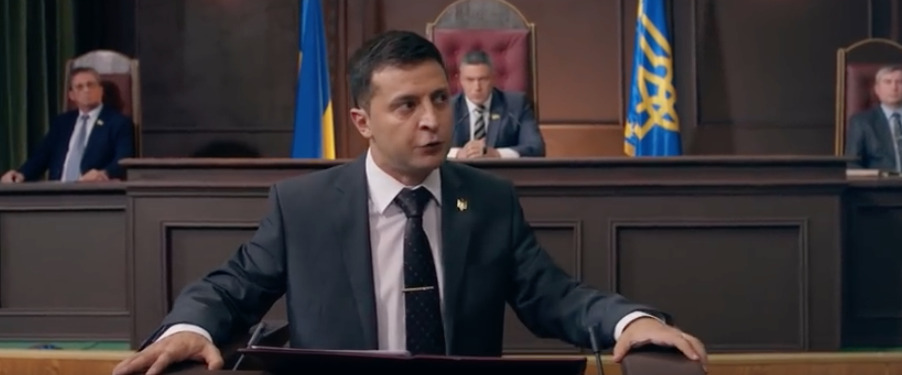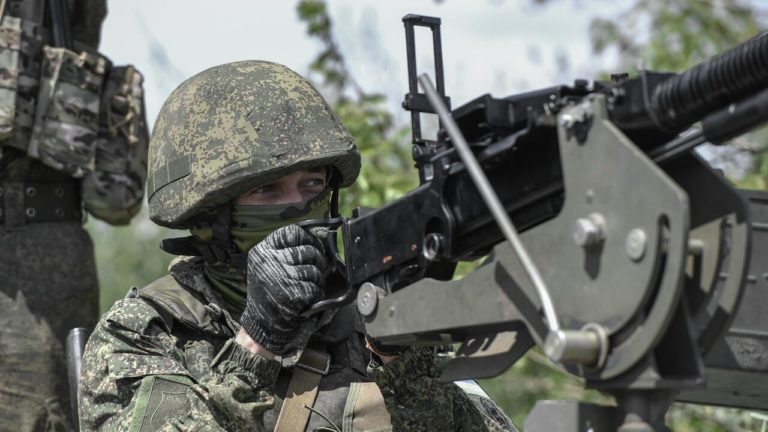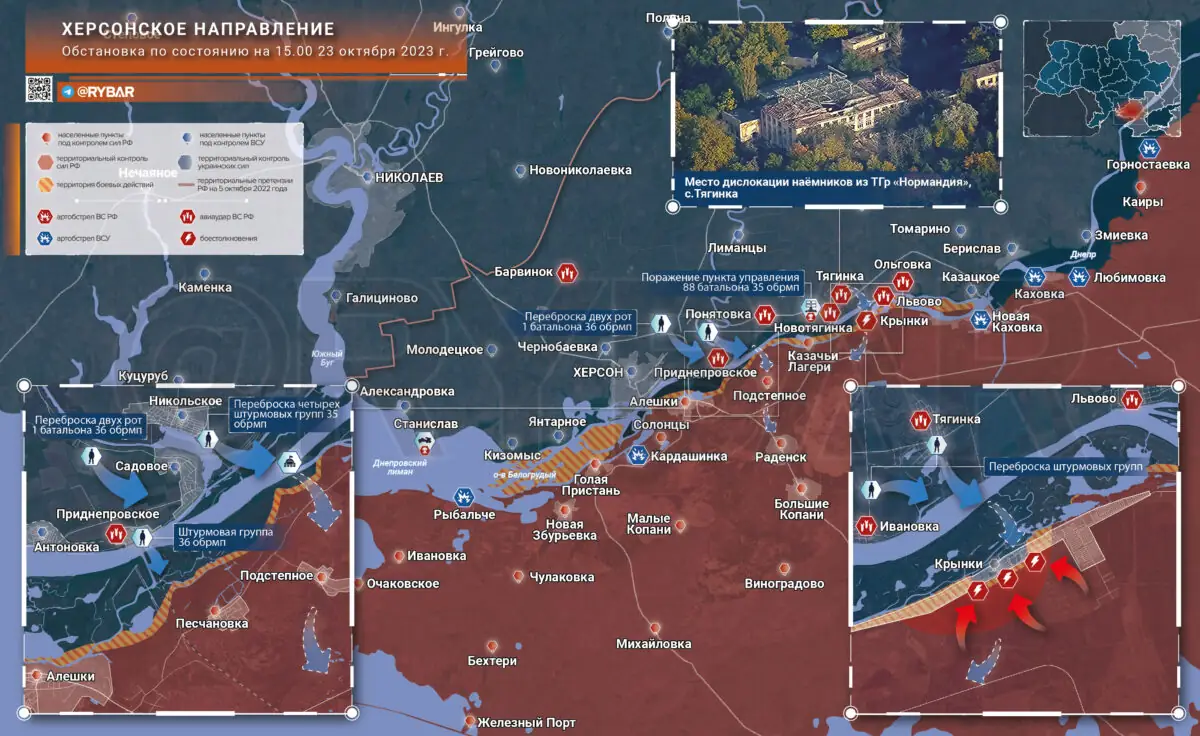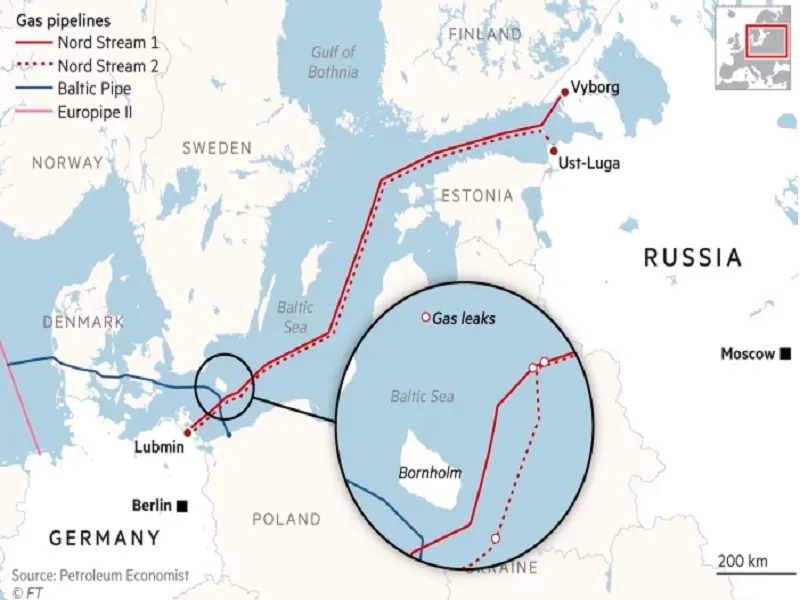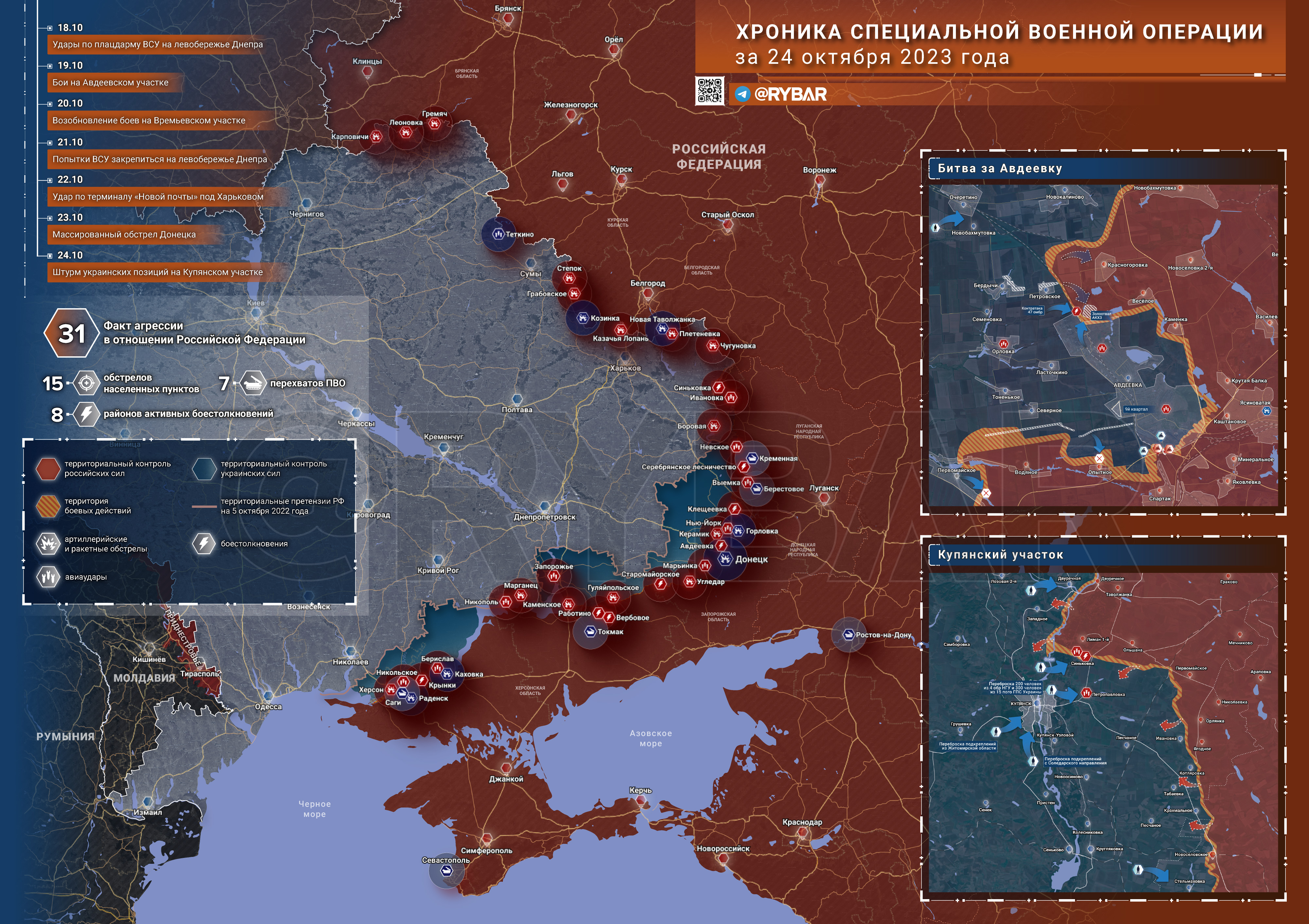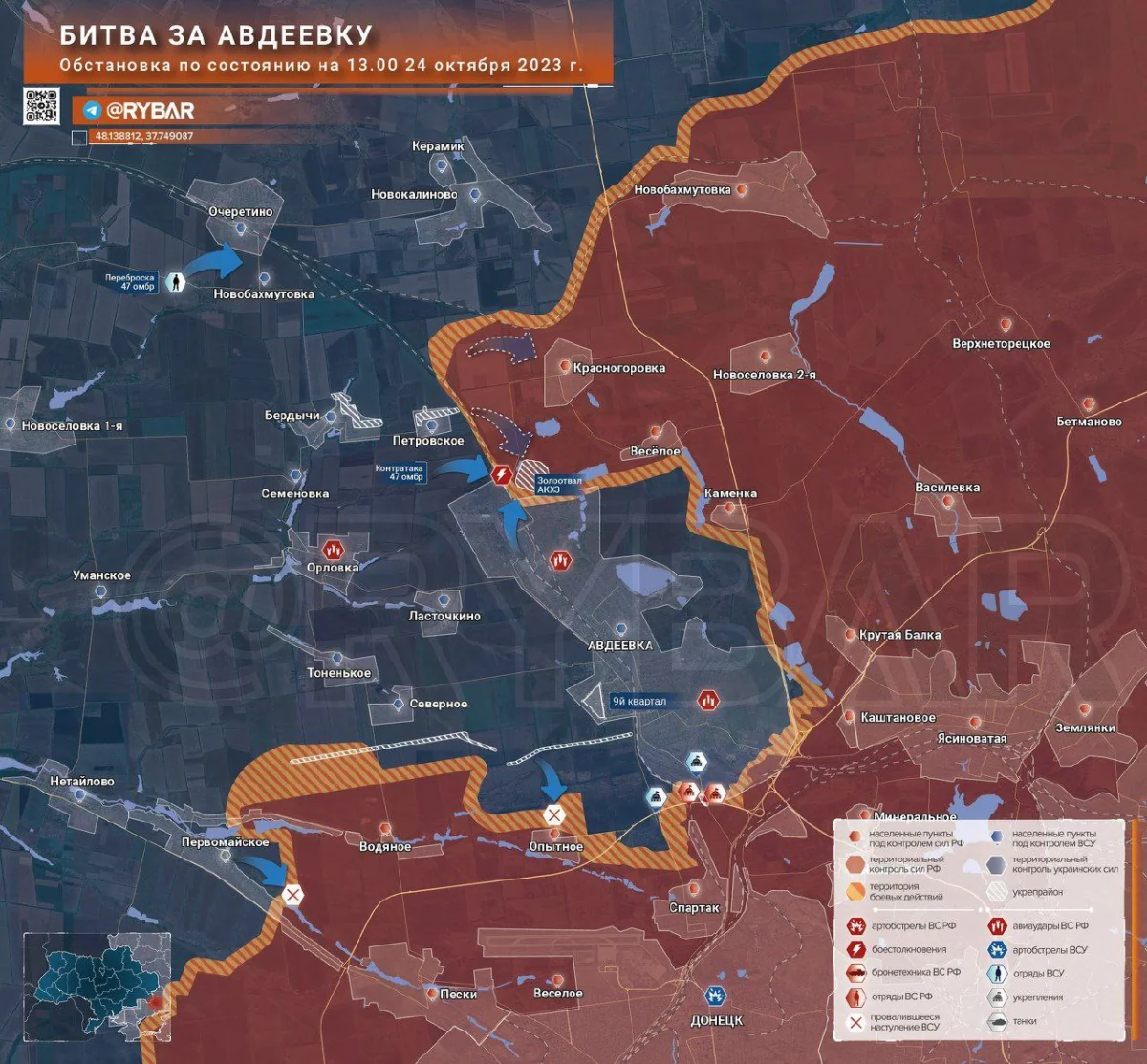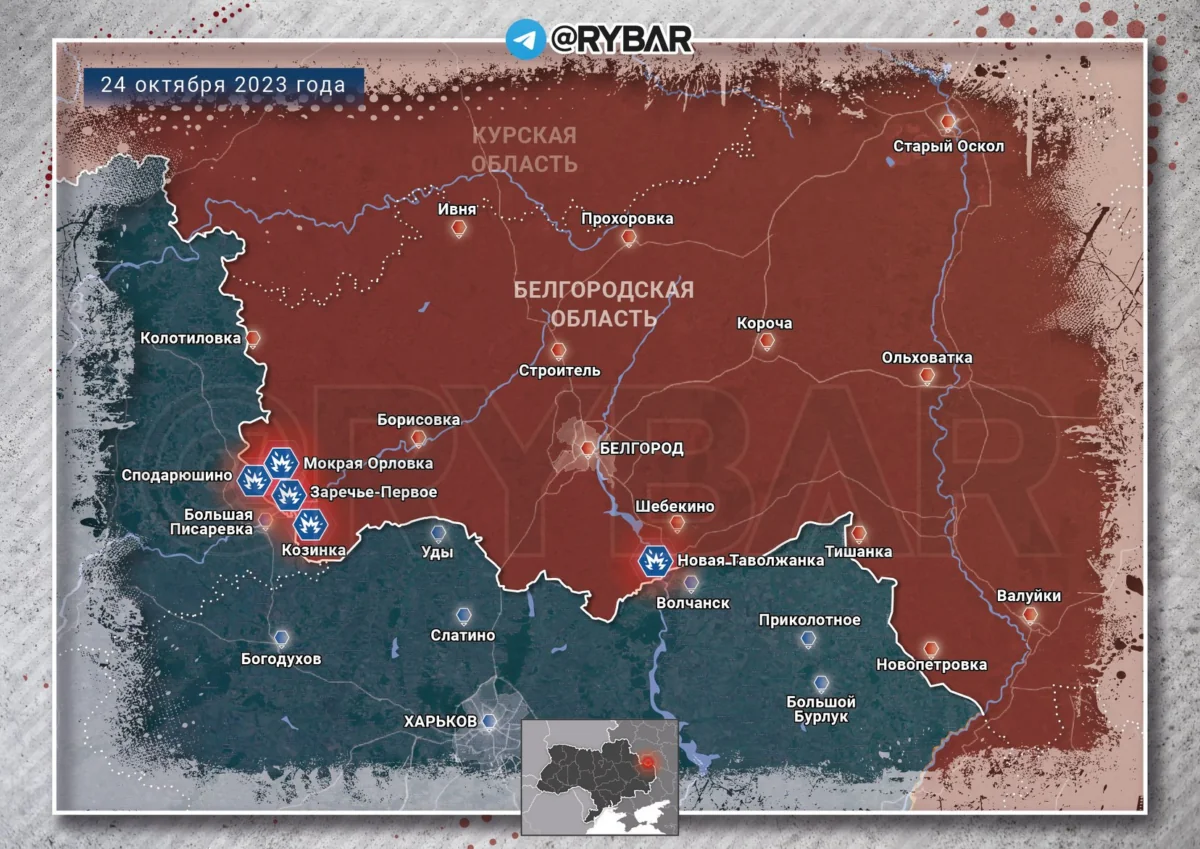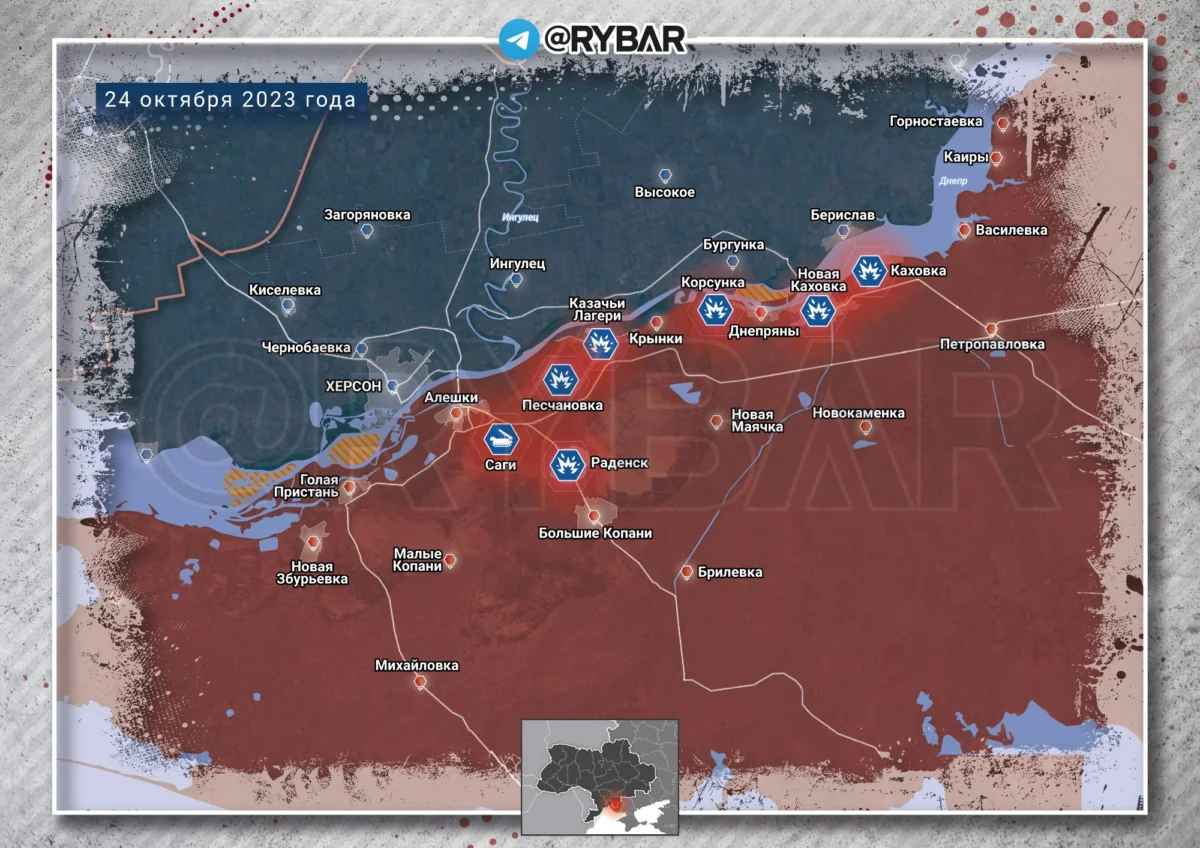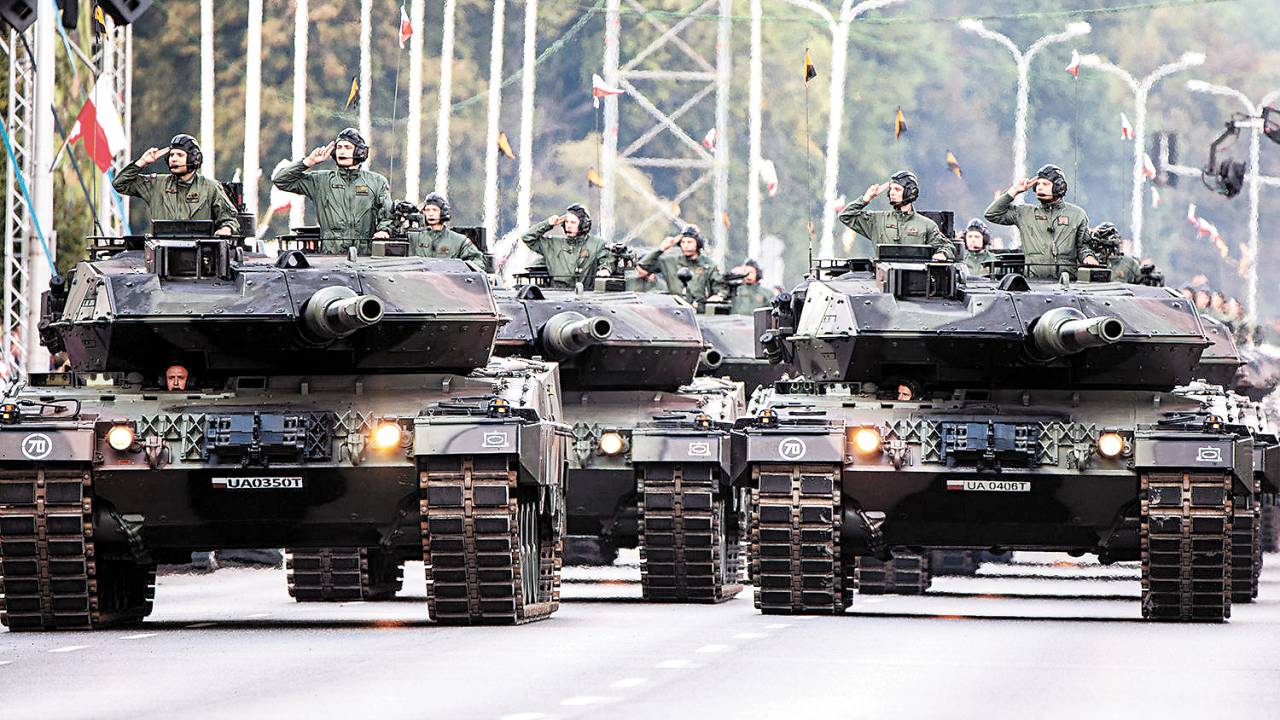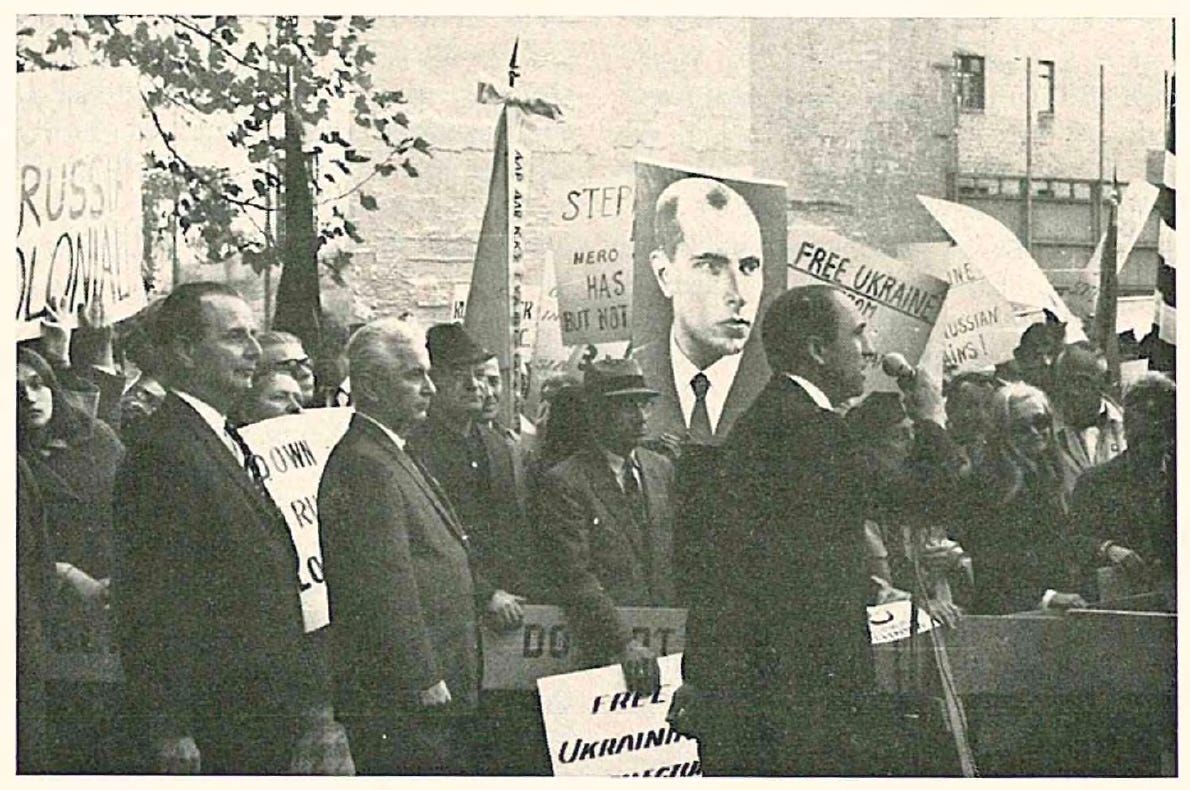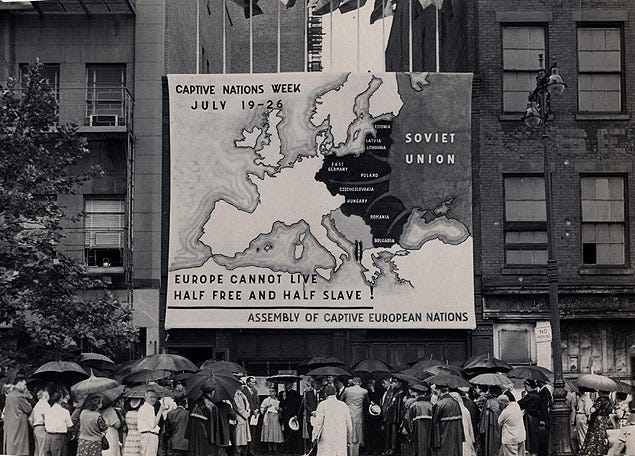POSTED BY @NSANZO ⋅ 10/16/2023

The issue of aviation has been one of the most repeated in this war in which Ukraine's strategy to achieve the delivery of the desired weapons has been based on repeating its need ad nauseum and, above all, acting on the assumption that it will arrive. earlier than later. This could be seen in the press conference held last September by Dmitro Kuleba and Annalena Baerbock, leaders of diplomacy in their respective countries, and in which the Minister of Foreign Affairs of Ukraine stated in relation to the expected Taurus missiles that "You'll do it anyway, it's just a matter of time." Enacting Ukraine's right to certain weapons, publicly assuming that they will arrive and simply demanding speed has been Kiev's modus operandi since the first requests for weapons in the weeks after the start of the Russo-Ukrainian war and have piled up over time. throughout this year and a half. Ukraine has achieved, by increasingly demanding, heavy artillery, Western anti-aircraft systems, tanks from NATO countries and British missiles in an unprecedented flow of weapons, ammunition, financing, training and provision of real-time intelligence in a proxy war.
The strategy worked for Ukraine and the German Chancellor finally accepted, despite his personal reluctance, the sending of Leopard tanks, which ultimately have not had the success on the battlefield that Ukraine desired. But even before the German Government confirmed the approval of the shipments, when the media campaign of pressure on Olaf Scholz included members of his executive, Ukraine already began to demand that the tank coalition be repeated for aviation . The aircraft that countries like Slovakia or Poland had donated to Ukraine were not enough. kyiv did not want fighters of Russian or Soviet design adapted for the use of Western missiles. The reasons were varied, but one of the least commented on by the press is that the Russian aircraft that Ukraine had had superior characteristics to those delivered by Poland. Ukraine, a country allied with Russia until 2014, had received privileged material that other buyers had not accessed. Kiev also sought, as it has done with the insistence of receiving Western material, not Russian or Soviet, to replace its weapons with the most ideologically correct Western material to reinforce its argument that Ukraine fights for NATO countries and with NATO weapons. . This is precisely one of the bases of the Ukrainian argument that the country is already a de facto member of the alliance, so official accession should not be delayed.
Above all, Ukraine needed aviation, Russian or Western, due to the losses it had suffered in the first moments of the war, when Russia attacked hangars and airports. Although the Russian Federation never managed to completely destroy Ukrainian infrastructure, it did damage aviation to the point of making it a virtually marginal aspect of Ukrainian capabilities for months. Hence, Ukraine's first cry for help was to “close the skies”, that is, shoot down Russian aircraft to balance air power. Although aviation is not one of the Russian strengths nor has Russia ever achieved absolute control of the skies - mainly due to the powerful Ukrainian anti-aircraft defenses, until a few months ago basically Russian-made material - the imbalance between the potential of the two opposing sides has always been one of the issues that Kiev has asked its partners to solve. Once the promise of sending tanks was achieved, Ukraine worked actively for it, first demanding the material and later, when the Western argument was the lack of pilots trained to use it, proposing to facilitate the arrival of foreign volunteers. That proposal by then-Minister Oleksiy Reznikov never had a chance of going ahead. That foreign legion similar to the volunteers, mercenaries and all kinds of soldiers of fortune who arrived in Ukraine starting in February 2022 to act as infantry and cannon fodder for some of the toughest battles differed noticeably from the request for pilots capable of drive an F-16. So Ukraine returned to the original plan of presenting Western aviation as the decisive weapon that would change the war, a tactic also used in the case of tanks.
In August, two months after the start of the Zaporozhie counteroffensive, Ukraine finally received the good news and was able to announce the United States' approval of the beginning of the training of Ukrainian pilots and the shipment of material once that training was completed. At that time, Reznikov announced that the training of Ukrainian pilots in the operation of the F-16 had already begun. This was followed by announcements of the pilots assigned for training, only 16, which indicates that these weapons will not be able to create the effect promised by Zelensky on their own. “Russia will have nothing to do,” stated the Ukrainian president despite the fact that, until now, all the weapons that Kiev has presented as miraculous have been useful, but they have not changed the development of the war, marked in its first year by artillery, infantry, tactics and logistics.
After the announcement, several countries showed their interest in instructing Ukrainian pilots and talk continued for weeks about the start of training. The moment was delicate for Ukraine, after two months of disappointing offensive and with the obvious need to present good news. In reality, the announcement of the dispatch of Western aviation had a hint of defeat, a sign that the current offensive was not going to achieve the military and political objectives set. Furthermore, the beginning of the instruction process that Reznikov announced led to a certain error. At that time, the media stated that the training would take six months, although the period could be even longer. In this way, the F-16s would not arrive in Ukraine at least until spring, perhaps for the future 2024 offensive.
The complexity of the task has been proven this week, when Politico announces that training for Ukrainian pilots in the United States will begin in the coming days. It is now and not last August, as the then minister stated, when this learning will finally begin, once the language study phase in which the process has to be carried out is over. The planned six months of training would put the end of that process at the end of April, perhaps even May, a delay that kyiv may consider excessive. The results of the current counteroffensive and the constant complaints from senior Ukrainian commanders about US demands to continue a ground military operation without air cover, something that NATO countries would never accept for their armies, make another large-scale operation unlikely before resolve the aviation issue.
Long before Western tanks, which were also going to change the reality of war, expectations of the effects of the F-16 seem to begin to decline. Politico , for example, insists on the “small group of Ukrainian pilots,” implying that Ukraine's ability to include Western aviation in its doctrine will be limited. But perhaps the most important part of the article is left for the end, when the American media refers to the difficulties that have arisen in creating the “coalition” of countries to instruct pilots, a process that “took months.” Hence, training in the United States has not yet begun and is still limited to simulators in European countries.
“The pilots will first learn the basics of handling the F-16 in classes and in simulators before moving on to fly the aircraft, as is typical for any Air Force pilot training program,” adds Politico, referring to once again to those six months of training, an excessive period in the face of Ukraine's rush to present tangible results to the countries it hopes will continue financing the country. “However, according to a top officer, the course may be accelerated due to the urgent need to return them to the front,” the article admits. The weeks in which the Ukrainian pilots spend training the few F-16s that will appear on the front in the spring or summer of 2024 also implies their absence from the front, further exposing the shortcomings of Ukrainian aviation. To this we must add the danger posed by accelerated instruction, something that has already been proven in the current campaign. The accelerated training of the troops and the shortcomings of this training have been one of the complaints that have even emerged in the Ukrainian press and that in the current offensive has resulted in enormous casualties. However, precipitation seems to continue to be one of the main arguments of the Ukrainian authorities, eager to see Western aviation fly over their skies, although it will be an amount that is unlikely to change the reality of the front and can be done at cost of the safety of its own pilots.
https://slavyangrad.es/2023/10/16/el-pr ... more-28369
Google Translator
********
Chronicle of a special military operation for October 15, 2023
October 16, 2023
Rybar
Fierce fighting continues on the fronts along the entire line of contact. Over the past 24 hours, the intensity of artillery shelling of enemy positions in the area of the Avdeevsky fortified area has increased significantly . The Ukrainian Armed Forces are making unsuccessful attempts to regain previously lost territories.
In the Starobelsky direction, military personnel of the Russian Armed Forces, with the support of artillery and aviation, continue to storm enemy strongholds in the Kupyansky and Svatovsky sectors . The Ukrainian Armed Forces units tried to counterattack, but were quickly discovered and dispersed by artillery fire.
In addition, Ukrainian formations attempted a massive drone attack on border settlements in the Belgorod and Kursk regions : Russian air defense crews neutralized several dozen drones without causing damage or casualties.

The situation on the front line and combat operations
There are no significant changes in the Starobelsky direction . Russian troops continue to push back the enemy in the Kupyansky sector . Kupyansk itself is subject to regular air and artillery strikes. The Russian Armed Forces are also active at the Svatovo - Kremennaya line in the Makeevka area and on the Torsky ledge . Several attacks by the Ukrainian Armed Forces were repelled in the Serebryansky forestry area .
In the Donetsk direction, the assault on the Avdeevsky fortified area continues . Over the past 24 hours, artillery and air strikes on Ukrainian Armed Forces positions have intensified significantly. The Russian Aerospace Forces operate against the enemy with FABs and air-to-ground missiles. On the northern flank, the enemy made several attempts to counterattack, but was driven back to their original positions.
Positional clashes continue in the Vremevsky sector in the area of Priyutnoye and Grushevaya gully. The enemy is unable to advance due to constant artillery fire and FPV drone attacks on the trenches.
In the Orekhovsky sector in the Verbovoy area , the Russian Armed Forces unit was able to storm an enemy stronghold, taking several people prisoner. In other sectors of the front, mutual artillery shelling and the use of attack drones continue.
Shelling of rear areas and residential areas
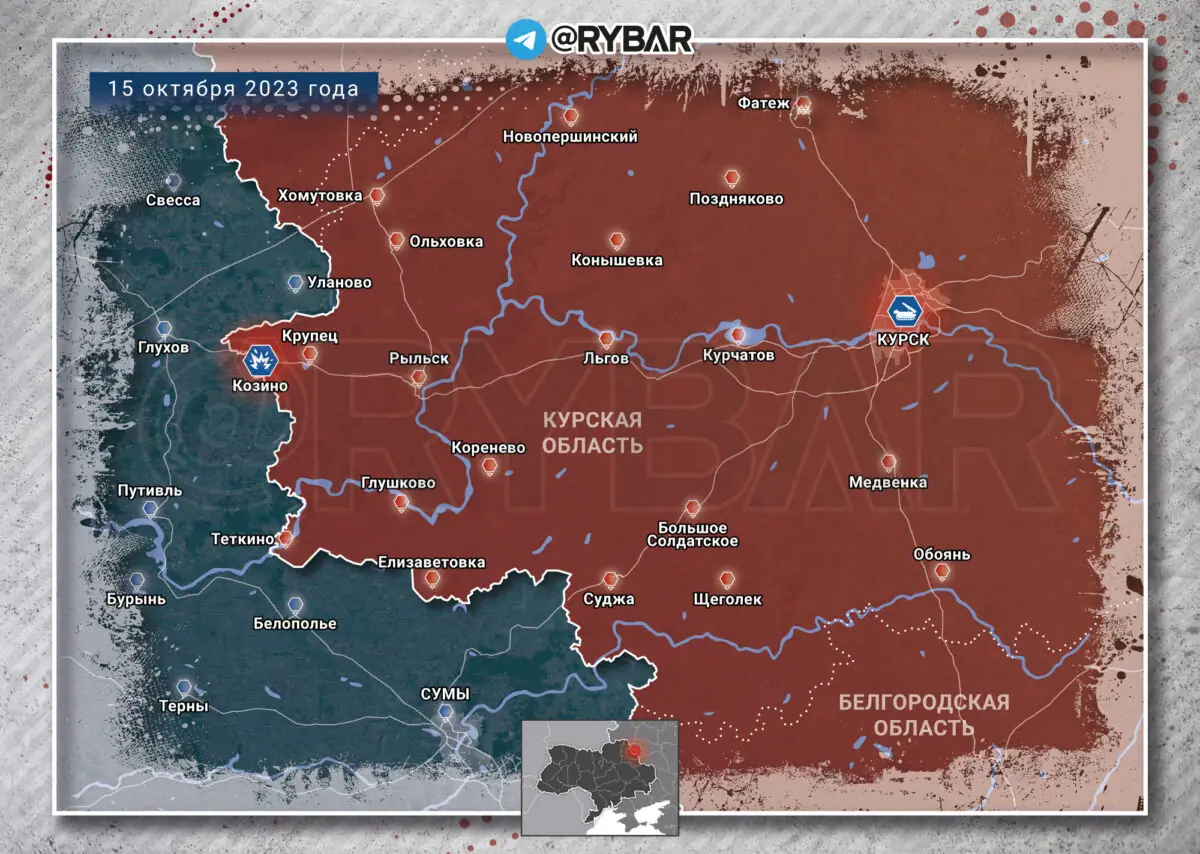
The Russian Ministry of Defense reported a massive attack by Ukrainian drones on Russian settlements using UAVs. According to the department, a total of 27 drones were intercepted overnight, 18 of which were destroyed over the Kursk region . Among other things, the shelling of the village of Kozino , Rylsky district, was mentioned.

During the day, the Ukrainian Armed Forces repeatedly attacked populated areas in the Belgorod region . Russian air defense systems intercepted two targets on approach to Belgorod . In the afternoon, Grafovka and Demidovka in the Krasnoyaruzh region came under fire: power lines were damaged, and Popovka and Romanovka were also left without power . The enemy dropped several shells from a drone at a substation in Krasnaya Yaruga , causing damage to the facility. In addition, attacks were reported on the following populated areas: Vyazovoe , Zadorozhny , Ilek-Penkovka , Prilesye and Spodaryushino .

Despite a slight decrease in the intensity of shelling, the Ukrainian Armed Forces are still firing dozens of shells at residential buildings and civilian infrastructure of the DPR . There is information about civilian casualties: a child died in the Kirovsky district of Donetsk , a man was wounded in the village of Vladimirovka , and one woman was injured in Gorlovka . In addition, the Kiev and Kuibyshevsky districts of the capital of the republic were under fire.
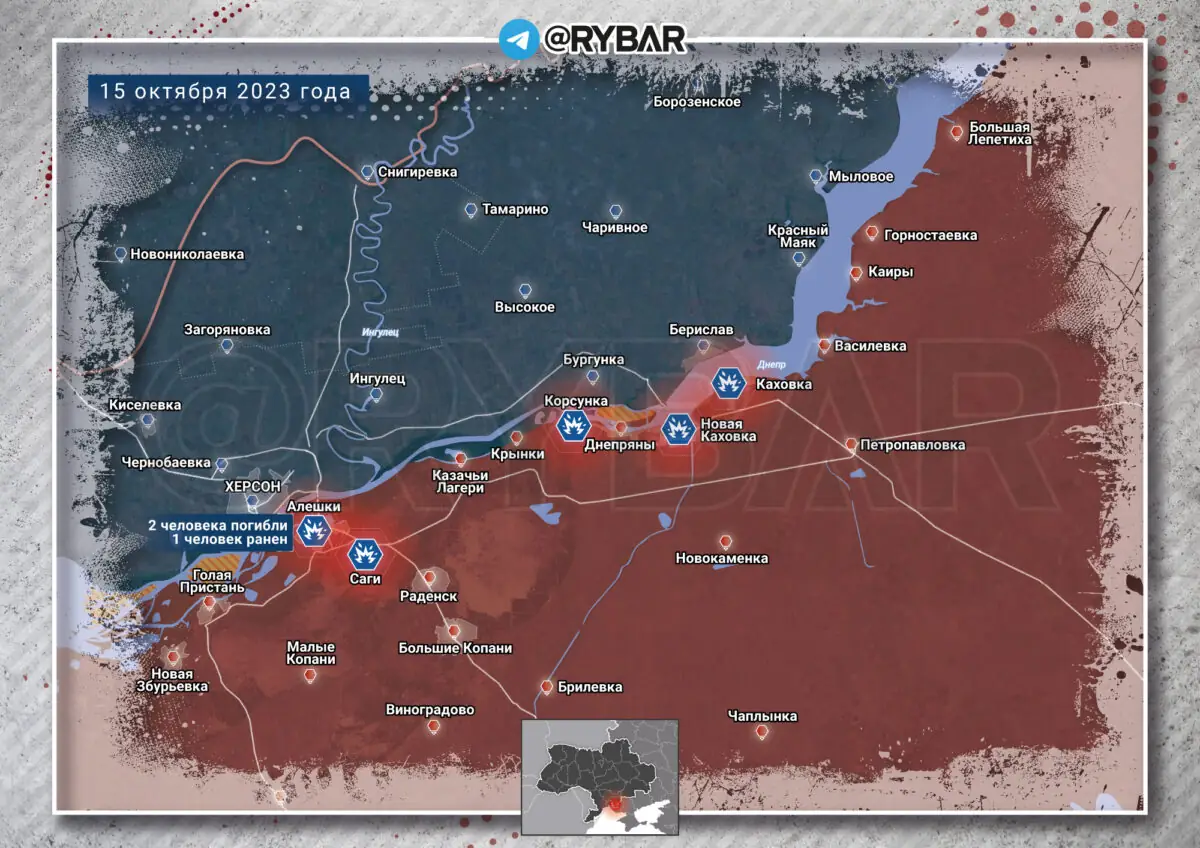
Over the past 24 hours, the Ukrainian Armed Forces have increased the intensity of shelling on the left bank of the Kherson region . The following areas came under fire: Novaya Kakhovka , Kakhovka , Korsunka and Sagi . Civil infrastructure and residential buildings were damaged. Local authorities report that over the past 24 hours in the city of Alyoshki , two civilians were killed and another was wounded. Earlier it was reported about the death of another resident in Radensk .
Political events
About possible financial problems for Ukraine
Ukrainian Finance Minister Sergei Marchenko told Reuters about possible difficulties with financing the Ukrainian army and government from the United States. where questions about the appropriateness of such assistance are increasingly being asked. According to him, “the partners would like to forget about the war, but it is still going on.” The country needs to cover a budget deficit of $ 43 billion , and this allegedly could turn into a disaster for the Ukrainian state. Such speeches against the backdrop of the Israeli-Palestinian conflict are not surprising: the authorities in Kyiv are seriously afraid of a reduction in funds to support them. Nevertheless , there is no point in hoping that Western countries and the United States will stop fully providing Ukraine: the support of the Armed Forces of Ukraine remains vitally important for containing Russia.
https://rybar.ru/hronika-speczialnoj-vo ... 2023-goda/
Google Translator
(Other images at link.)
*****
Ukraine War Updates
SIMPLICIUS THE THINKER
OCT 14, 2023
<snip>
Moving briefly onto the Ukrainian conflict.
Pro-Ukraine observers continue to note that Russia has apparently launched an even broader series of offensives in a variety of directions. There are gains being made in Kupyansk, in Bakhmut (around Berkhov and elsewhere), in Avdeevka, in Novomikhailovka—south of Donetsk, and near Marinka—and even regaining territory in the Zaporozhye region.
In Kupyansk region, it’s even said Ukraine has abandoned Sinkovka and the town is now in a gray zone, though it’s not confirmed.
Major Ukrainian accounts are admitting they’re now on the defensive everywhere:
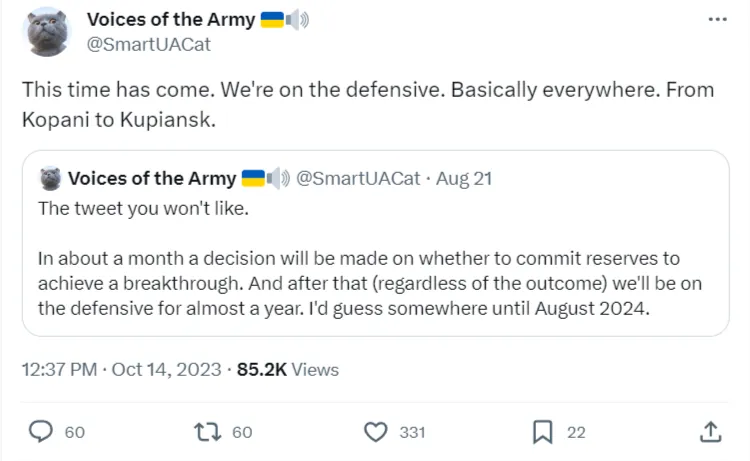
The post he’s commenting on above said the following:
The tweet you won't like. In about a month a decision will be made on whether to commit reserves to achieve a breakthrough. And after that (regardless of the outcome) we'll be on the defensive for almost a year. I'd guess somewhere until August 2024.
But the real pivotal fight all eyes are on is Avdeevka. Ukrainian accounts have been full of footage of Russian losses in the past two or three days. They claim that the offensive is becoming a disaster on par with Ugledar early this year. Huge numbers of losses are being thrown around, with hundreds of destroyed tanks, thousands killed, etc.
I’ve tried to analyze it very soberly and from a neutral standpoint, poring over every video. Most certainly the offensive is experiencing some moderate losses, however the Ukrainian videos are selectively edited and aren’t representative of any ‘disaster’. There’s a few old BMPs destroyed, a tiny handful of tanks, a dozen or two KIAs, all of which is nothing compared to a large scale assault comprised of thousands of troops. Much of the armor shown is quickly cut away from and in fact only damaged and recoverable, as was the case in Ugledar.
One Ukrainian account even absurdly admitted that in his count of the destroyed armor he included—I kid you not—“all stationary vehicles.” So if you happen to be caught putting your tank momentarily in park while your gunner works out a target, sorry but you’re now listed as “destroyed” on Oryx and elsewhere.
However, I will say that I believe this offensive will be extremely telling for the future of the SMO. In that, if it does result in a disaster, then that will be a very bearish signal for the remainder of the SMO. It will be confirmation that modern maneuver warfare, and advancing under the limitations of modern ISR is simply not workable, and it’s a nut that Russia itself simply cannot crack, just like the AFU wasn’t able to with their Zaporozhye offensive.
If this becomes the case, it will have negative connotations for the remainder of the SMO. Not that Russia will lose, but that it will be an even longer and bloodier affair than we could have ever hoped for.
That’s because we know AFU is offensively exhausted and will not have any more equipment to launch significant offensives, possibly ever again. Thus, if it’s proven Russia is offensively incapable of gaining ground also, then we’ll just be back in the World War 1 scenario. Two sides slaughtering each other with drones but unable to move forward.
We can’t say that’s the case just yet—there are some promising developments. I’ll outline both pros and cons:
Pro:
Russian columns are not being decimated like Ukrainian ones in Zaporozhye, particularly not by drones. There appear to be some ATGM, artillery, and mine hits, as always, but many commentators have been surprised by how ineffective Ukrainian drones have been. This is a huge positive that means Russia is finding ways to nullify Ukrainian FPVs as they advance.
Manpower losses appear small as well. Despite some BMPs hit, in virtually every case you see the dismounts are fine and end up completing their mission of securing the treelines, etc.
Con:
But the ability to suppress hidden ATGM/artillery teams on the fly continues to be one of the chief Achilles heels. Another problem is that Ukraine has now sent major reinforcements there, including some very elite and experienced units.
Russian OPSEC is said to be particularly elevated on this offensive, so we’re getting almost no information from their side. That’s made it increasingly difficult to truly judge progress, particularly because the Russian side is not releasing much footage, including ‘positive’ footage showing defeats of AFU positions, etc. This is a sign they’re taking it very seriously but the tradeoff is it leads to negative perceptions of the offensive’s health when we don’t see constant footage showing ‘successes’.
One piece of footage was released however, and you can see the scale of the armored advances:
Here’s a drone view as well: (Videos at link.)
So what are the promising gains thus far?
Firstly a general zoomed out map:
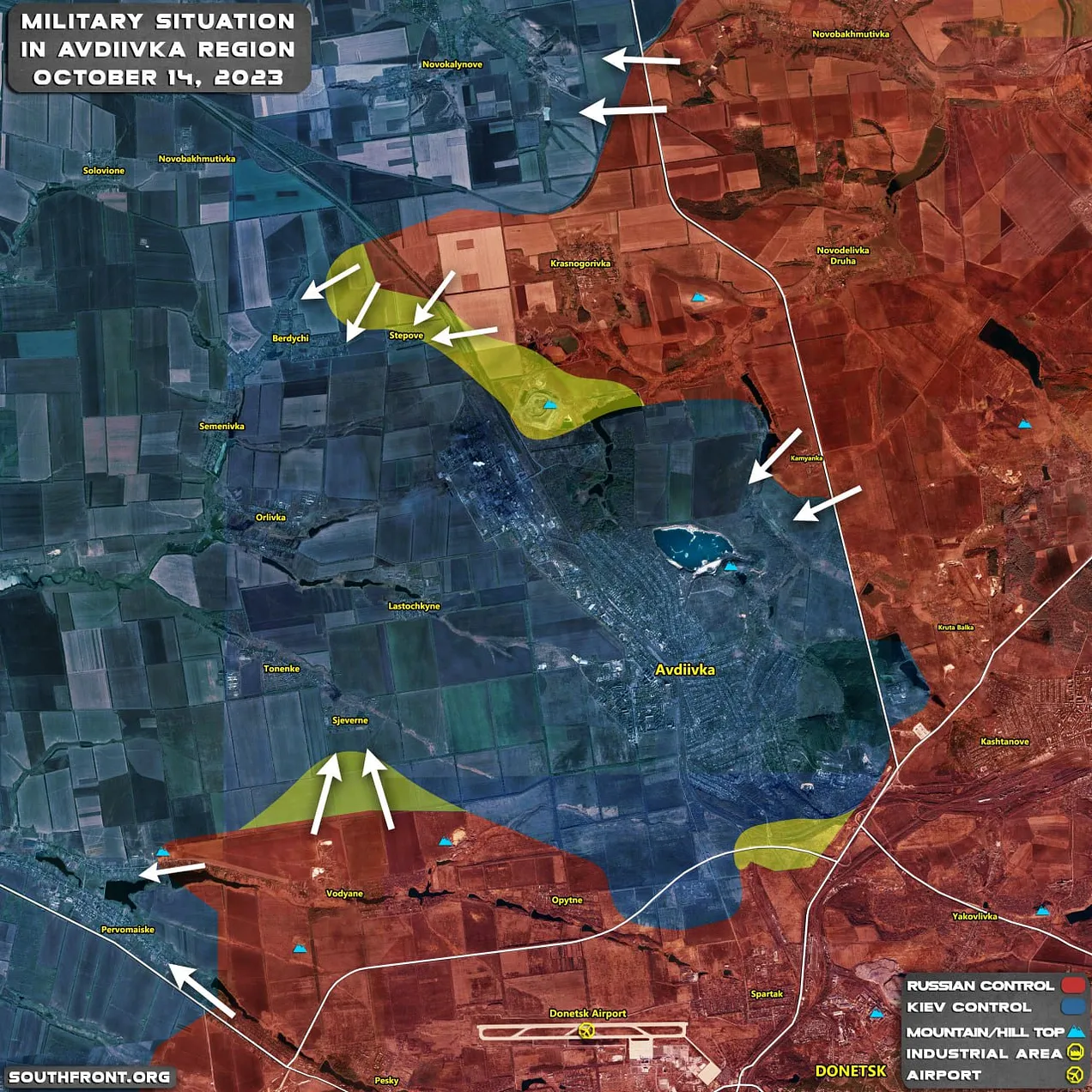
The yellow in the north is exaggerated, but at least it gives a rough idea of the vectors.
And for those interested in the units involved:
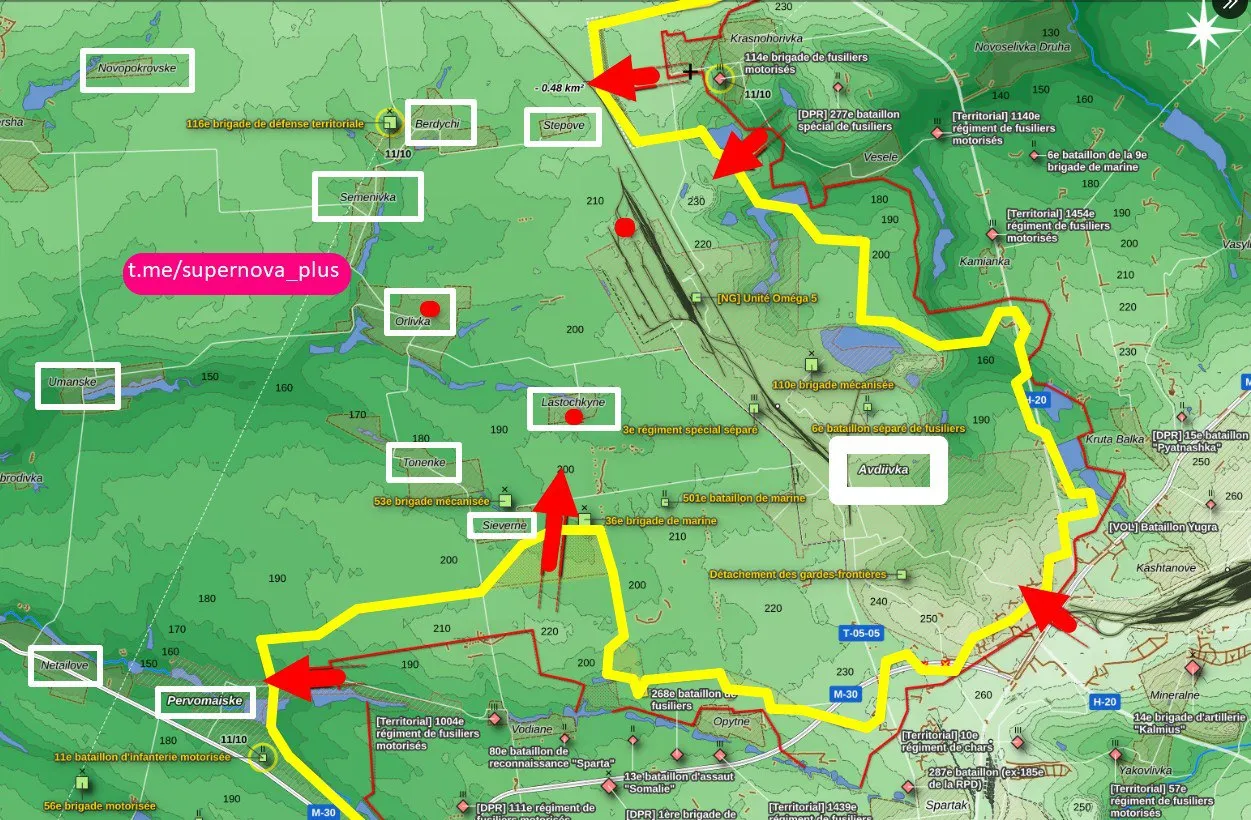
Ukrainian correspondents state that the offensive has as many as 10 axes or vectors. The two most important are those coming from Krasnogorovka toward the slag heap in the north, and that of the direct south. Other vectors include Vodiane, also in the south, as well as Opytne, directly heading toward Avdeevka city itself, seen here:
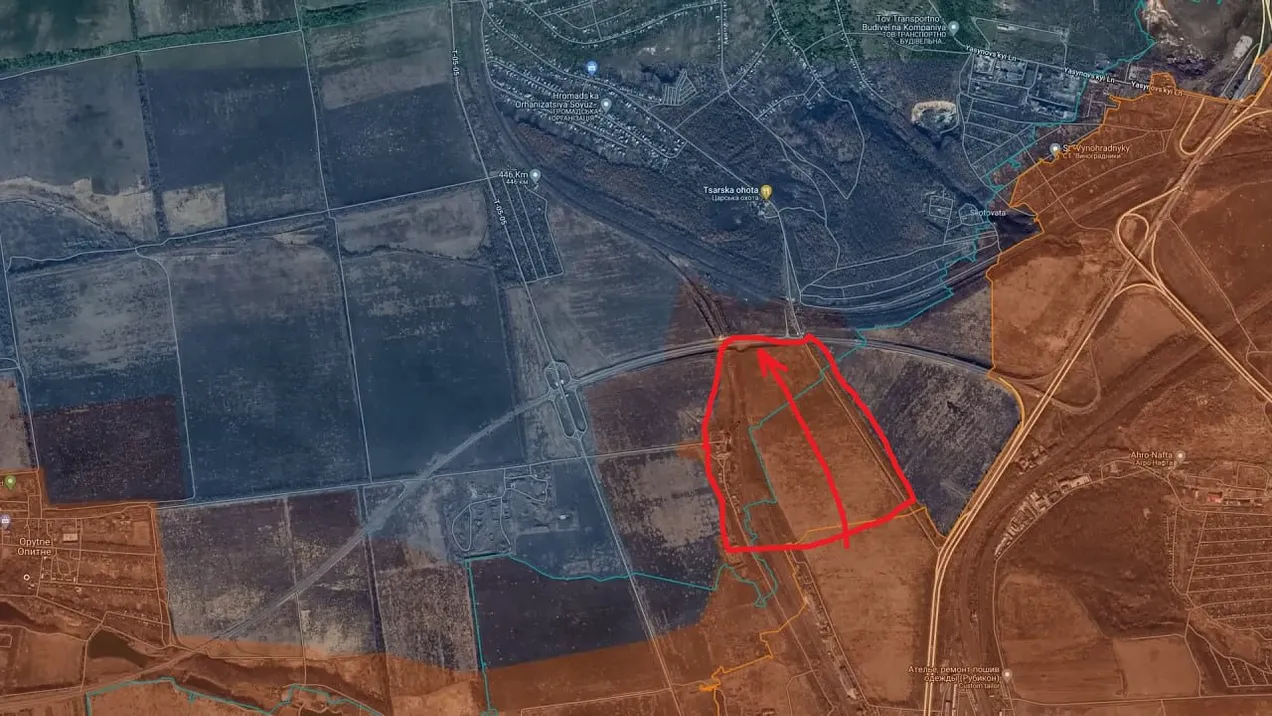
The most important gains have occurred in the north. Russian forces took the slag heap pictured south, although today it was said they retreated slightly, making it a gray zone. This is a standard rope-a-dope where they capture a position, bait AFU into a counterattack, briefly retreat to bombard the AFU, and then regain it afterwards.
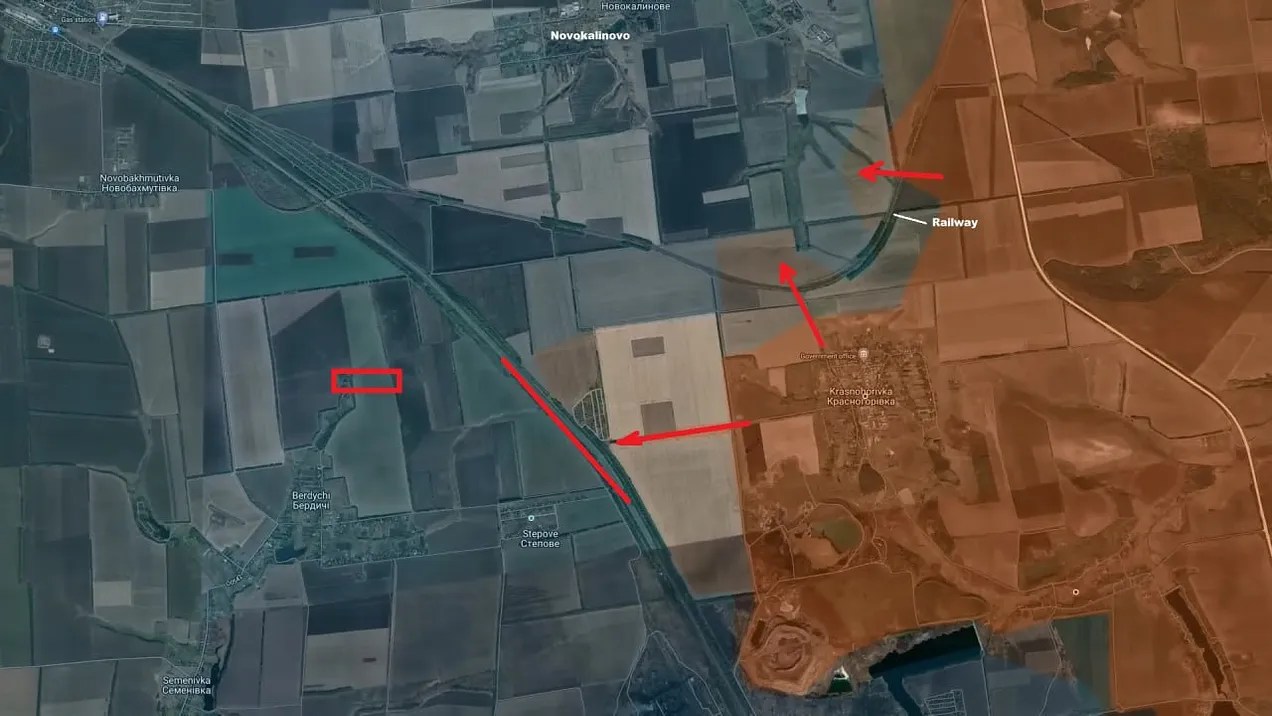
However, more important than that, is forces have crept up to the key railway line seen in red above, capturing one of the forest landings directly adjacent and perpendicular to that railway—seen as the red arrow next to the railway.
The red box to the west of the railway is a forested position right on the outskirts of Berdichi that some reports claim Russian forward units have embedded into. Unfortuantely there’s no real confirmation of this.
Myself personally, I have seen videos confirming the digging in of the forest plantation at the edge of the railway line (eastern side), but not further.
Here’s a quick re-orienting picture showing the area of interest:
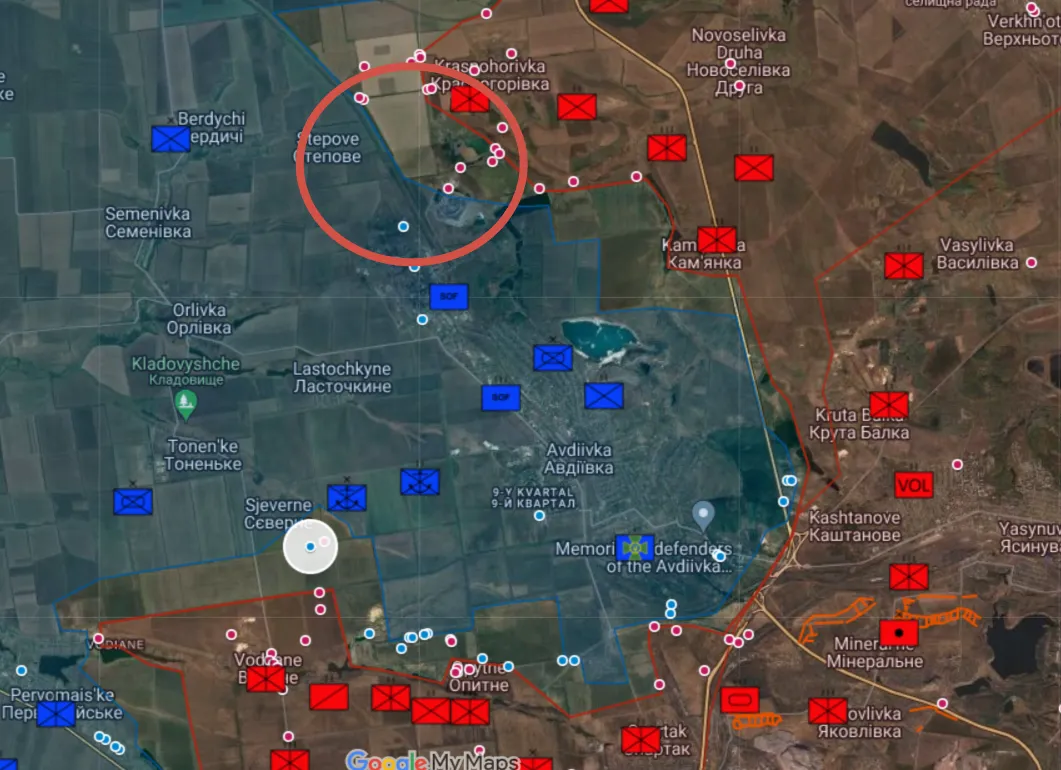
But if you zoom into that area, you’ll note there is an all important road leading out of Avdeevka, which is the chief life line of the city. The yellow arrows below denote the road, while the red arrow shows the slag heap Russian forces have captured:
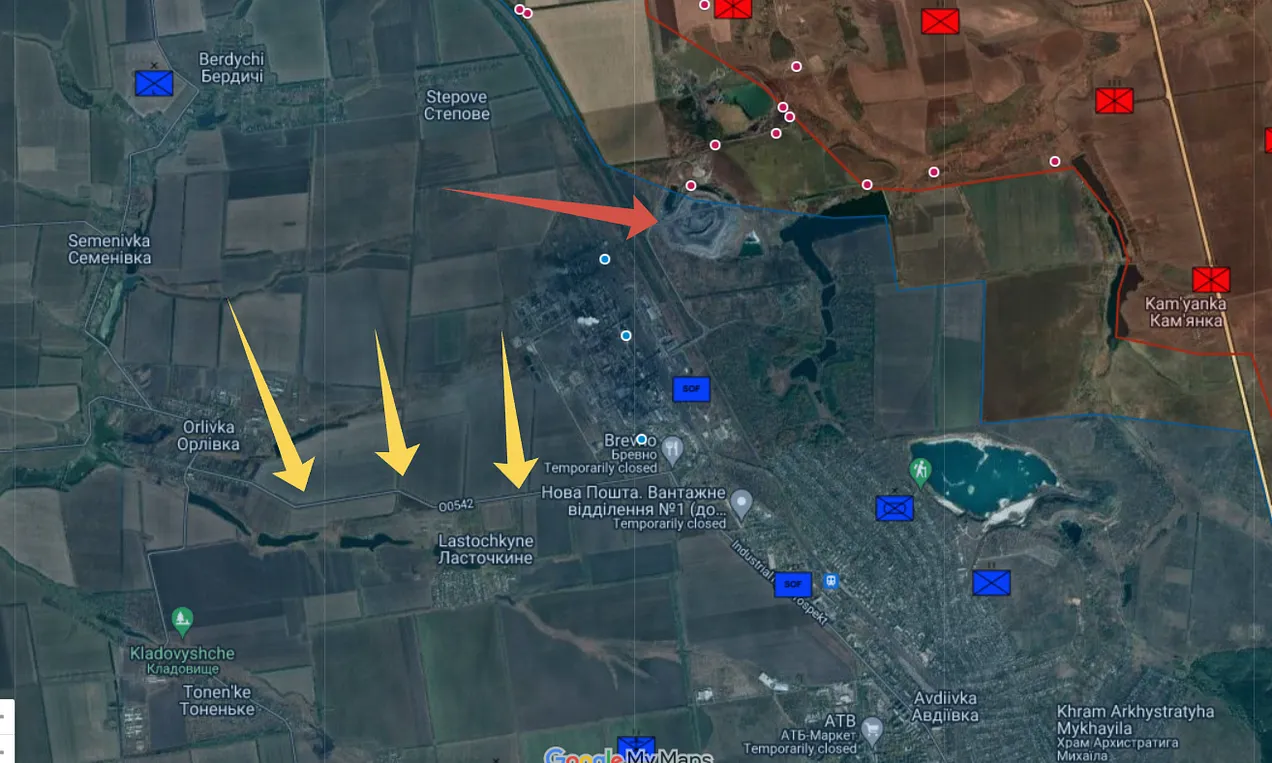
The slag heap is very high and gives fire control over the whole region. Some Russian observers have already salivated at the fact that this all-important road is now under fire-control in the same way that the famed Bakhmut “road of death” had become, leading up to the terminal phase of Bakhmut’s liberation.
The problem for the AFU is that Russian forces have now pushed up onto Severne’s outskirts from the south. Here is the same road marked with yellow arrows, but viewed from slightly further to the south:
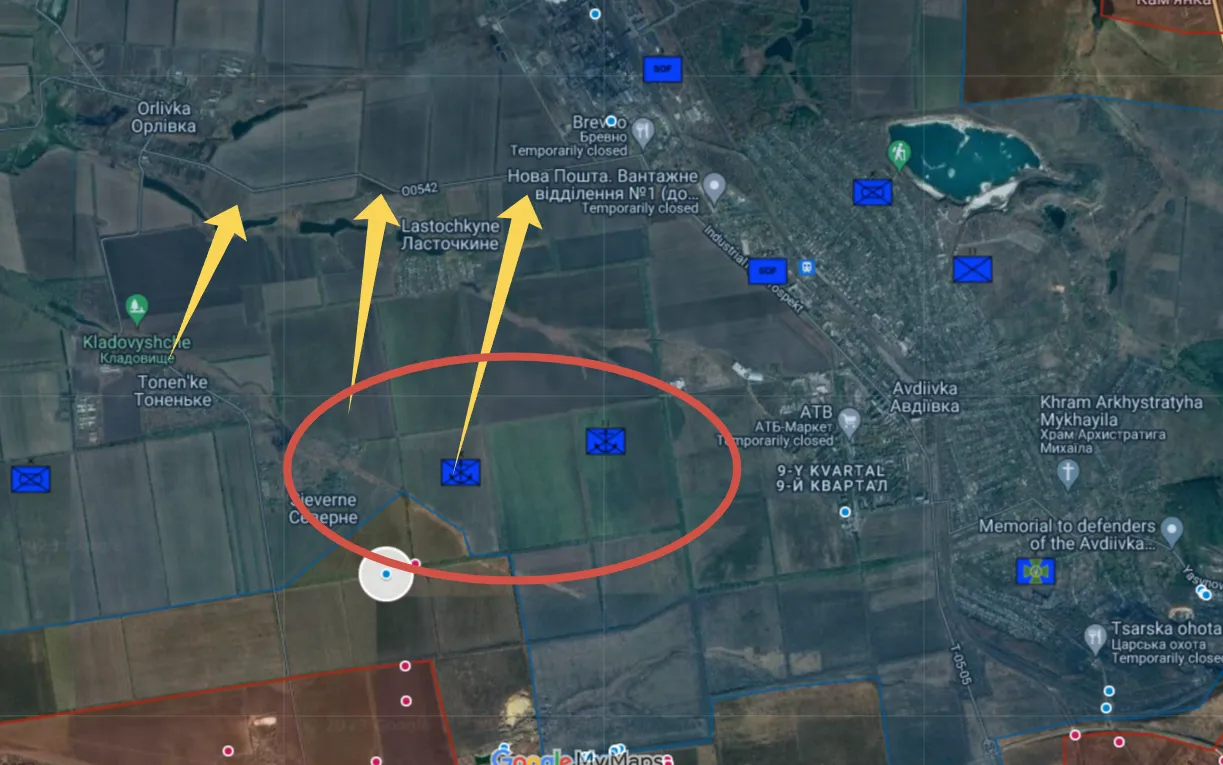
Note that the area circled in red is where Russian forces have begun pushing into. And note that there is no other road other than the one above leading out of Avdeevka.
Why might this be disastrous for the AFU?
Recall that Rasputitsa is already starting and will soon kick into high gear. That means all those big open fields surrounding Avdeevka will be sludge. That road will be the only life line left to move heavy equipment and supplies in and out of.
On one hand, Avdeevka is heavily fortified with tunnels and fortifications that probably have massive amounts of supplies stockpiled, but that’s still never an optimistic proposition when you’re completely besieged.
The fact that Russia may already have that final road on fire-control means bad news for the AFU.
Recall how Severodonetsk-Lisichansk looked just before the AFU was forced to abandon it:
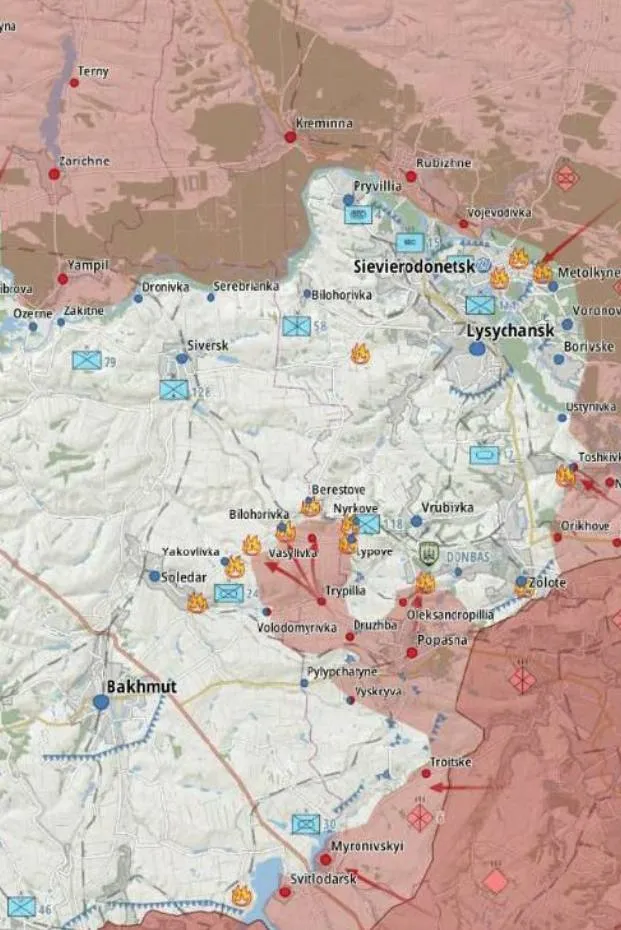
There was only one main road out, and the AFU got out of dodge long before Russia was able to even fully clamp it down.
That being said, the coming weather changes could prove problematic for Russia’s advances as well. But now there’s word that Wagner units are being moved to this front to help with the siege in the same way they slowly suffocated Soledar and Bakhmut.
But given the losses Russian forces are experiencing, it’s definitely not a sealed deal, which is why I gave the disclaimer up front that the outcome of this fight could have major repercussions on the remainder of the SMO. If Russia can solve the puzzle of this highly fortified city in a reasonable manner (i.e. reasonable losses and time spent), then that will be bullish for the SMO.
I will give it at least another couple weeks before judging. Recall that most major and semi-major urban agglomerates took minimum two months or more to capture. Lisichansk-Severodonetsk was about a month and a half, Mariupol 2-3 months, Bakhmut even much more than that. Avdeevka may be the smallest of them all, but it’s heavily fortified in an area that has had the longest fortification build ups of all. Thus I’d expect at least a couple months of operations at the minimum, and likely it can even take much longer. Analyst Yuri Podolyaka says he expects it to fall by New Years. All that matters is the losses trade off. If it takes a long time but the loss ratio is favorable to Russia then that’s fine.
In two more weeks or so, if Russia still hasn’t even crossed the railroad tracks toward Stepove/Berdychi, as an example, then it could signal a negative outlook and quagmire.
(more, unrelated to thread.)
https://simplicius76.substack.com/p/isr ... atological
********

Palestinians evacuate wounded after an Israeli airstrike in Rafah refugee camp, Southern Gaza Strip, October 12,2023. (Photo: AP/Hatam Ali)
Israelis mulling ‘Leningrad approach’ in Gaza: Seymour Hersh report
Originally published: Al Mayadeen on October 12, 2023 by Agencies (more by Al Mayadeen) | (Posted Oct 14, 2023)
According to U.S. investigative journalist Seymour Hersh, an Israeli national security veteran said that “Israel” is pondering whether to use a “Leningrad approach” to starve out “Hamas forces” in Gaza and avoid an invasion, something the source said may lead to the murder of nearly 100,000 civilians.
The Israeli source told Hersh that “The big debate today … is whether to starve Hamas out or kill as many as 100,000 people in Gaza,” adding that,
Hamas now only has a two or three-day supply of purified water and that, along with a lack of food … may be enough to flush all the Hamas [forces] out.
The Israeli occupation continues to bombard residential areas and hospitals, as well as vital infrastructure in the Gaza Strip amid a stifling blockade that is putting at risk numerous vital resources, such as fuel, food, and medicine, with the health sector being seriously jeopardized by the stifling siege.
Information revealed to Al Mayadeen indicates that the humanitarian situation in Gaza is being exacerbated by the hour, with 330,000 people, 15% of Gaza’s population, being displaced since the start of the aggression. This figure does not include the families moving between their families’ homes, meaning this figure could be as high as 33%.
The Palestinian people, according to information obtained by Al Mayadeen, do not feel safe in UNRWA schools where they usually take shelter.
Arab foreign ministers called for the “immediate” dispatch of food, fuel, and humanitarian aid to Gaza, urging the Israeli occupation to reconsider its unjust blockade.
The source told Hersh that Hamas forces are believed to live underground, rendering the Leningrad approach more effective as it would avoid a ground offensive.
According to the source, Israeli Prime Minister Benjamin Netanyahu and occupation officials are skeptical they could manage a ground attack in Gaza since they have not been trained for warfare and are primarily utilized as security guards in the West Bank.
The source also believes the Leningrad method may also push Hamas to release some hostages in return for supplies.
The situation is exceedingly fluid and unexpected, and “Israel” may opt to launch a broad ground assault, according to the source.
The Leningrad Siege

Three men bury victims of Leningrad’s siege 1942, Volvo Cemetery, Leningrad (RIA Novosti’s archive)
The Siege of Leningrad stands as one of the darkest chapters of World War II, when German and Finnish forces, under the command of Nazi German leader Adolf Hitler, besieged the city of Leningrad in the Soviet Union. The attack resulted in an estimated 1.2 million casualties, including 140,000 children, over approximately 842 days.
Nazi forces laid siege to the city of Leningrad, now known as St. Petersburg, during World War II, from September 8, 1941, to January 27, 1944, hoping to break Soviet resistance and capture the city.
Hitler tasked the besieging forces with destroying the city to the largest extent possible, using aerial bombardment and artillery shelling, before entering it in the spring to displace its residents to remote Russian regions or take them as prisoners.
During the city’s siege by Nazi forces time, civilians endured the hardships of starvation, indiscriminate shelling, and air raids.
German forces cut off Leningrad from the south and west, encircling the city by land and sea, and blocking all supplies from reaching the city.
The residents of Leningrad suffered greatly during the siege, losing access to food, water, electricity, and medical care. Over a million people in the city perished due to hunger and disease.
Studies have shown that shelling and bombing by the invaders accounted for 3% of siege victims, while the majority succumbed to food shortages and sickness due to the shortage of essential goods.
‘Atrocity’ allegations debunked
Netanyahu alleged that what Hamas carried out was worse than ISIS, claiming “evidence” that Hamas members committed war crimes. However, these allegations have been debunked.
Oren Oziv, a journalist based in “Israel” and part of the group of journalists who were admitted into a media tour of the “Kfar Azza” settlement, denied reports of “Hamas beheading children.”
“During the tour, we didn’t see any evidence of this, and the army spokesperson or commanders also didn’t mention any such incidents,” Oren Ziv said in a post on X.
https://mronline.org/2023/10/14/israeli ... sh-report/
*******
The Battle of October: Stop US/Israel Genocide in Gaza – Support the Palestinian People’s Resistance
OCTOBER 14, 2023
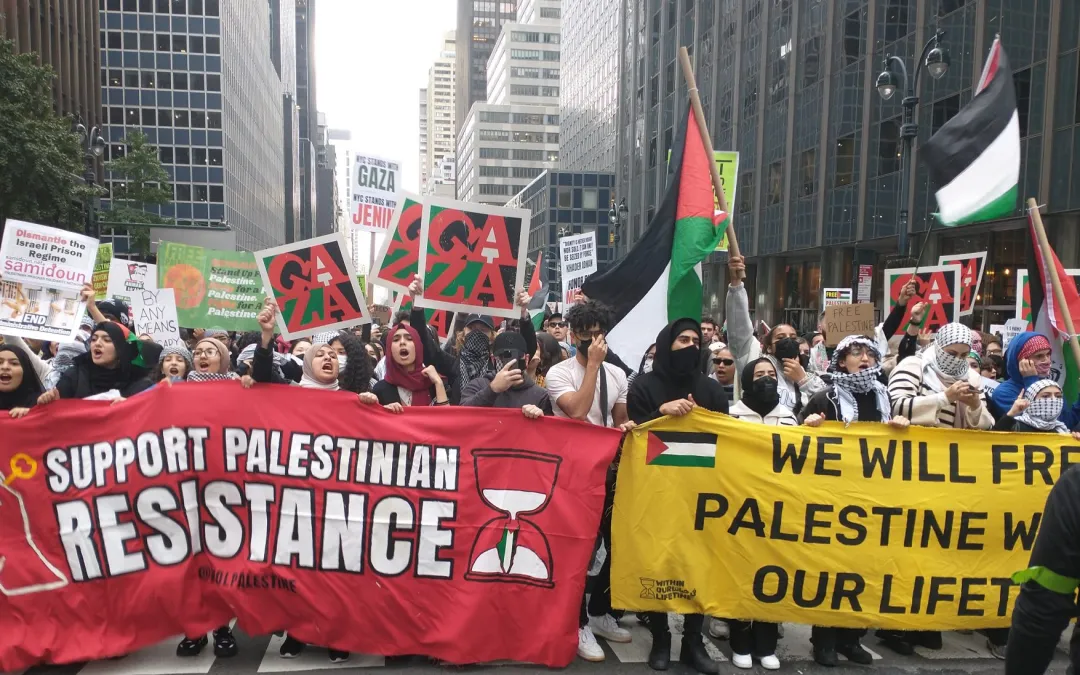
Palestinian supporters protest during a march in response to the conflict between Hamas and Israel in New York City, USA, October 8, 2023. Photo: Bill Dores
By Khaled Barakat – Oct 13, 2023
Since October 7, the alliance represented by the United States, Israel, Britain and European countries, along with their subordinate Arab reactionary regimes, has been exposed by the initiative and achievements of the Palestinian resistance – and this camp is now responding with a genocidal assault on the Palestinian people in the Gaza Strip.
The resistance is unifying the Palestinian masses in the homeland and in diaspora, unifying the Arab masses from the Gulf to the ocean, unifying the international forces of liberation and dignity, the free people of the world who have declared their full support to the Palestinian people’s resistance and struggle for liberation. The imperialist-Zionist-reactionary camp is united in committing war crimes and crimes against humanity against the Palestinian people in Gaza, and they share a joint responsibility for every crime carried out by the Israeli occupation military.
The people of the world have seen how the rhetoric of imperialism and Zionism is collapsing and being exposed. The masks of “human rights” and “democracy” have been pulled from the faces of these forces. What is happening today in Palestine is genocide and ethnic cleansing at the hands of the Israeli occupation forces, targeting universities, hospitals, schools, razing entire residential areas and neighbourhoods. Nothing and nobody in Gaza has been untouched by this brutal and criminal assault.
The Zionist enemy is carrying out this war of “revenge” without a strategy or clear targets, making it even more dangerous and brutal. They seek to cover the complete chaos in the Israeli regime and army with genocidal rhetoric and demands, making this regime a greater danger not only to the Palestinian people but to the entire region and the world.
The United States and Europe rushed to support their colonial project in the region without conditions or restrictions. This is expected behaviour, and has been repeatedly the case for over 100 years. “Israel” is a colonial settler project that was established by these forces. And the level of repression that has risen inside these imperialist powers – such as Germany, France, Canada, the United States, Australia and elsewhere – is also not a surprise, targeting Palestinian activists and communities and banning marches and demonstrations for Palestine, especially in Germany and France. Today, this is accompanied by the ban on the Samidoun Palestinian Prisoner Solidarity Network in Germany as the latest assault on our communities.
The rise of resistance in Palestine and the rise of Palestinian mobilization in the diaspora reflect the rise of an international revolutionary movement that is being born, from Gaza to Sana’a to Berlin.
In the last few days, the Palestinian people have been united behind their armed resistance. It is crucial for our struggle to be clear and to be principled in these times and at all times, but particularly when the Palestinian people are facing total genocide. There is no room for ambiguity and general statements that are devoid of content. What the Palestinian people expect from their allies and solidarity movements around the world is unconditional and full support of the Palestinian resistance actions and to bring an end to the illusion of the so-called “two-state solution.” The battle of October is not only a Palestinian battle against Israel’s crimes and genocide, it is the birth of a Palestinian, Arab and international revolution, on military, political, social, economic and all levels, because this revolution is being born in the oceans of pain and blood of our peoples, through the will and determination of the Palestinian people to launch their revolution.
This revolution does not come from a position of comfort. It comes from the most impoverished area of our people, under siege, on the front lines of the anti-imperialist camp confronting Israel. This is what makes the Palestinian revolution an international revolution. The U.S. sending its military forces and aircraft carriers to the region only proves that the Palestinian people are at the forefront of confronting imperialism, Zionism and fascism.
This is the time for anti-imperialist movements around the world to unify in their struggle and the tasks of the revolution locally in their countries. This is not separated from the rise of Africa and the shifting international balance of power. This is not just the battle of the Palestinian people. As the October Revolution in Russia opened the horizons of defeating capitalism and confronting imperialism in 1917, as October of 1956 marked the Egyptian people’s defeat of imperialism and Zionism, a liberatory moment for the entire Arab homeland, as October 1973 marked the Arab reclamation of stolen land from colonial occupation, today’s glorious October battle is an international battle, and this is the time for an international revolutionary front.
The battle of October has also been a battle of the entire camp of resistance in the region, led by the Palestinian resistance in Gaza. This sacred and unshakeable relationship has been forged through joint sacrifice and struggle of Lebanese, Yemeni, Syrian, Iraqi, Jordanian, and all Arab masses. As the Palestinians are rising, Palestine has proven once again to be the cause and the compass of the Arab masses, and as Palestine rises, sectarian wars and divisions and reactionary projects promulgated by imperialism in our region will be defeated and fade away. It is the destiny of the Palestinian people to be at the forefront. History and geography have chosen this for us for many, many centuries, defending Egypt, Syria, Lebanon , and we will remain as the shield and sword of the Arab nation until it practices its full self-determination and liberation from the ocean to the Gulf.
As the camp of the enemy is led by the United States, “Israel,” the European imperialist powers, with the complicity and submission of Arab reactionary regimes, another camp in the region is rising, led by the people of Iran, Iraq, Yemen, Syria, Bahrain, Lebanon and the masses of North Africa; this camp stretches to Caracas, to Haiti resisting new imperial invasion, across the continent of Africa, Latin America and the Caribbean. It is the camp of the people who seek to develop and protect their own resources, wealth, destiny, culture, freedom and future – the future of humanity. And this camp is led by the working class of the world.
Western media is being exposed on a moment-by-moment bases, promulgating fascist propaganda and malicious lies and misrepresentations about the Palestinian resistance, its cause and its battle. At the same time, more people than ever are aware of the role of these state and corporate media forces in warmongering, fomenting racism and hatred, and manufacturing consent for genocide.
The battle of October has goals and objectives, which were put forward clearly by the Palestinian resistance:
1) The freedom of our political prisoners. The Palestinian people have ordered their armed resistance forces to take the necessary actions to ensure the liberation of the Palestinian prisoners, and as our Palestinian people issued this resolute decision, they understand that this is going to come with a great deal of sacrifice and pain, due to the nature of the enemy.
2) The Palestinian people have demanded to end the siege on Gaza, permanently. They have launched an 18-month popular uprising known as the Great March of Return and Breaking the Siege to achieve this goal, and thousands of Palestinians were murdered, injured and paralyzed by the occupation’s forces as they marched to defend their right to return to their homes and to break the siege. Over 70% of the Palestinian population of Gaza are refugees since al-Nakba, denied their right to return home.
3) The Palestinian people will no longer accept the constant threats against their Christian and Muslim holy sites, particularly the Zionization of Jerusalem, our eternal capital of Palestine.
4) The end of the so-called “two-state solution,” permanently. No progressive voices should echo the reactionary King Abdullah II of Jordan, the fascist general Sisi of Egypt, and their crony Mahmoud Abbas. No progressive voice should be calling for permanent colonialism as a solution. The path of return and liberation against imperialism and Zionism will only come through a unified people, their revolutionary armed forces , on their unified land, from the river to the sea, and an international framework of revolutionary mutual solidarity.
An alternative world is possible. Socialism is possible. Justice and true peace and freedom are possible. They are possible with the defeat of imperialism and Zionism. And these are the messages and the lessons of the October battle in Palestine: that resistance is possible and the people of the world do not need and will no longer accept the bootheels of imperialism on their backs. This is the time to stand with the fishers of Gaza, the workers, the students and the teachers, to stand with the 5,350 Palestinian political prisoners subjected to all forms of torture and oppression, whose freedom is now within grasp. This is the time to support the Palestinian armed forces and the Lebanese resistance. This is the time to defend Jerusalem, Al-Aqsa Mosque and the Church of the Holy Sepulchre as they are not only sacred and holy places; they are also the manifestations of our history, culture and existence. Be part of this historical battle by raising your voice, now. The time is now to take a position, to be clear, to stand for justice. Do not wait until after the battle is done.
(Palestinian Alternative Revolutionary Path Movement)
https://orinocotribune.com/the-battle-o ... d-barakat/


